Burnished coppery
Illuminating darkness
Mother memory
Words and photograph | Huw Morgan
Published 23 November 2019
The Cornelian cherry have been expectant for the better part of January. Round buds plump and peppering the branches. Look closely at the beginning of February and you see the dark casings that hold them tightly, ruptured and revealing a seam of gold. I return daily as they gather momentum, passing the witch hazel, which is already perfuming the exit from the garden, and crossing the track to the ditch where I have planted a grove of Cornus mas. Here, staggered on the steep slopes, they step from one side to the other in a group of half a dozen to frame the passage the bridge makes across the water.
I am eager for life this far into winter and the cornus budburst happens at the same time that the snowdrops claim these last two weeks of February and as they pass the baton to the primroses. I have combined the three here deliberately and en masse, so that the crossing becomes an event to focus the near horizon. With the waning skeletons of the garden now behind me, the energy in the cornus help start to move things forward. One at a time, but quickly gathering pace, the darkness in the bare branches is eclipsed by a myriad tiny cadmium yellow flowers of invigorating intensity. Each bud contains up to twenty tiny flowers that are as much stamen as petal, but the accumulation of thousands make the trees appear to be spangled with an inner light. With the snowdrops and primroses they are a magnet for early pollinators.
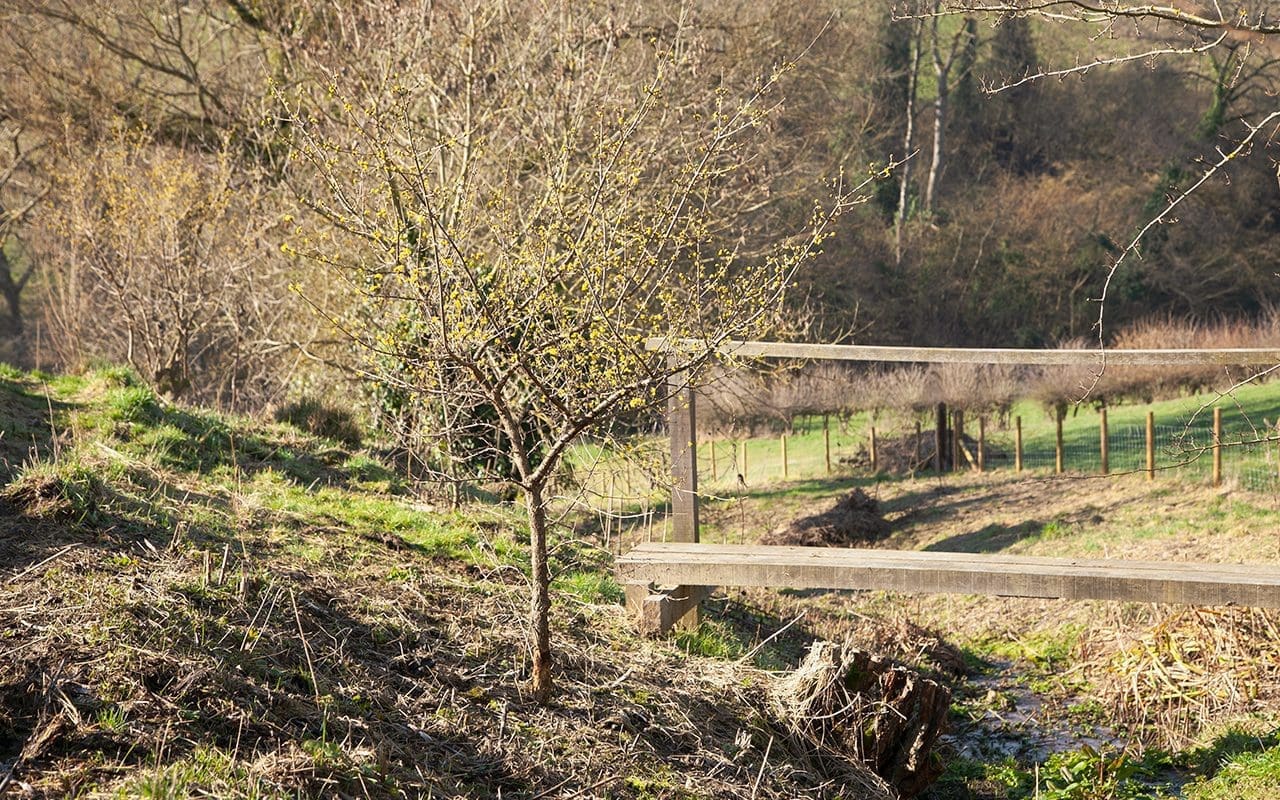
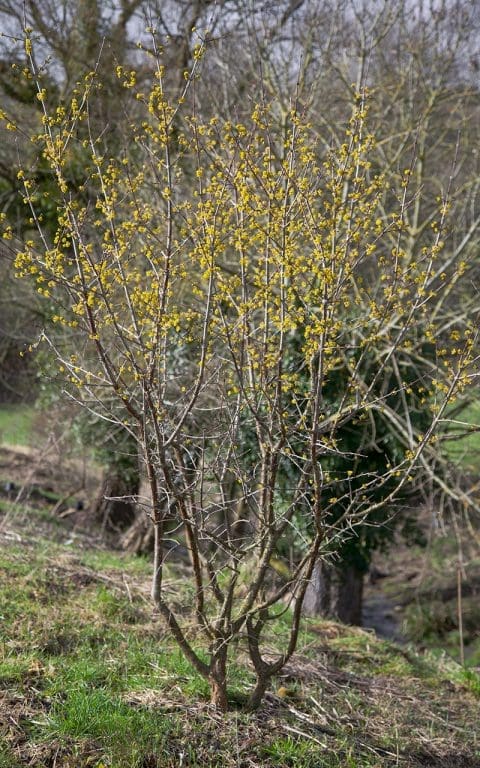
The cornus are young and are currently not much taller than myself. I brought them in three years ago as root-balled specimens to replace the brambly hedge that had swallowed this little ravine. Cleared and opened up again the banks have been host to meadowsweet, willowherb and other marsh-loving perennials. Though they are very slow growers – creating a wood so dense it sinks in water and is highly prized for making tools – I hope that eventually they will grow to about the height of a hawthorn and touch in places where I have planted them close enough together. In time, flaking limbs, branching low and twisting give the trees winter character – a contorted, Japanese quality – and me the opportunity of raising the canopy by pruning out the understory. Something to look forward to and deliberate upon whilst doing so.
I watched for the first couple of years to find the places where the cornus might be at home, because I knew they would not take the wetness that our native Cornus sanguinea is happy with. Although widespread in Southern Europe and Southwestern Asia, their preference is for ground that holds moisture and doesn’t dry out entirely in the summer, but that never gets waterlogged. It has been an education to see how they have already shown me where they like to be. I hit water when planting two, the springs in the bank not being visible above ground. Since the land is steeply sloping I felt it would be free-draining even with running water, and so I went with it. Sure enough, now that the trees have had two summers to settle in, I can see that, given a damp position they are already growing more lushly than those on the higher, dryer ground. Only one has suffered from being planted in a boggy pocket, and seemed slowly to be going backwards, although it has started to shoot from the base, so may be making its own adjustments. Time will tell as the conditions express themselves further in growth, but for now all of them are happy.
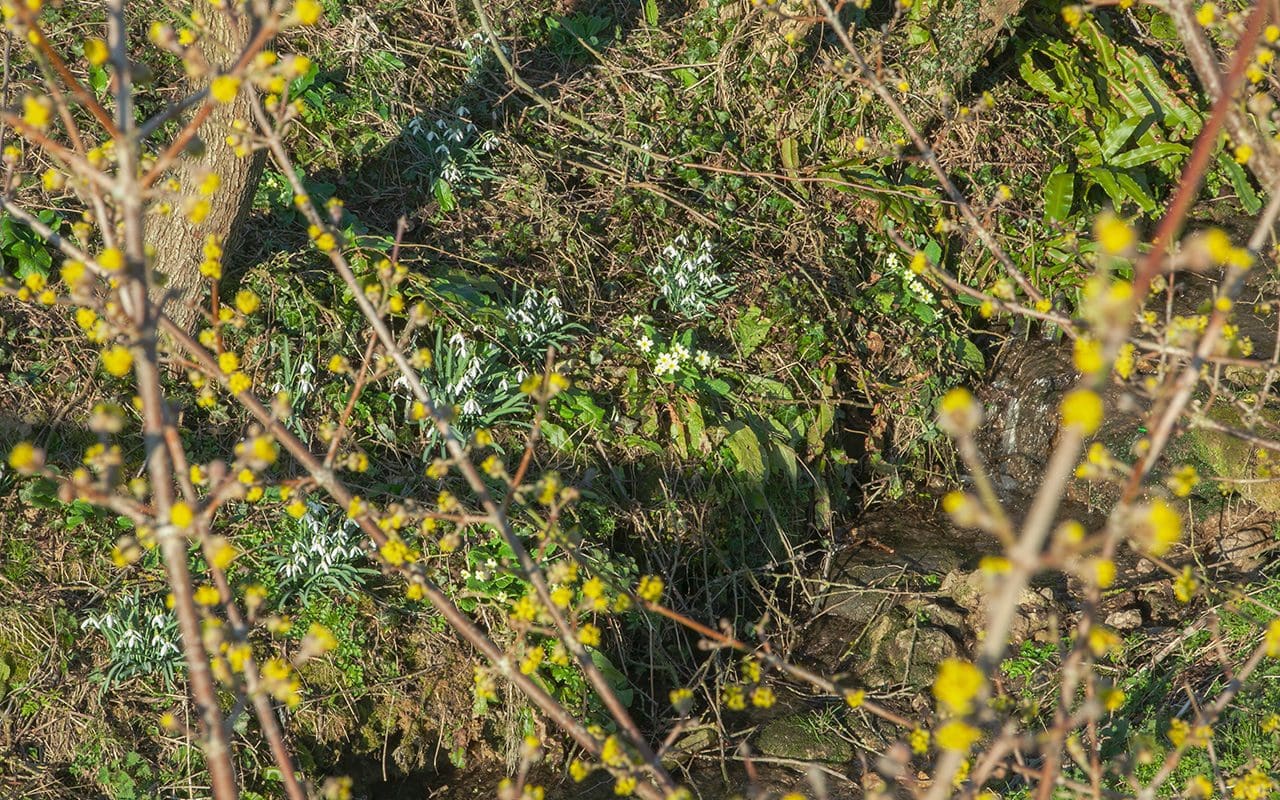
My mission now is to extend the snowdrop trail that I have growing under the nearby hazel to follow their canopies. The snowdrops will be sure to let me know where the ground is too wet, but they are likely to enjoy the drying effect that the roots of the cornus will have in the summer when in growth. The trees will be in flower for the best part of a month, so I have underplanted them with Tenby daffodils which will pick up as the snowdrops wane and the cornus dim.
In summer, the Cornelian cherry is easy on the eye in a natural setting, for its leaves are not unlike our native dogwood. Late in summer, in a warm position where the fruit can ripen, you will see that they are hung with small drops of ruby red, which are highly prized by birds. Though too tart for us to eat raw, they have been an important food source for over 7000 years in Greece, where they are still made into jam and raki. As autumn comes the foliage colours russet and gently red and, by the time the leaves drop, you will already see the embryonic buds, ready and waiting for the time when we gardeners are hungry for signs of life.
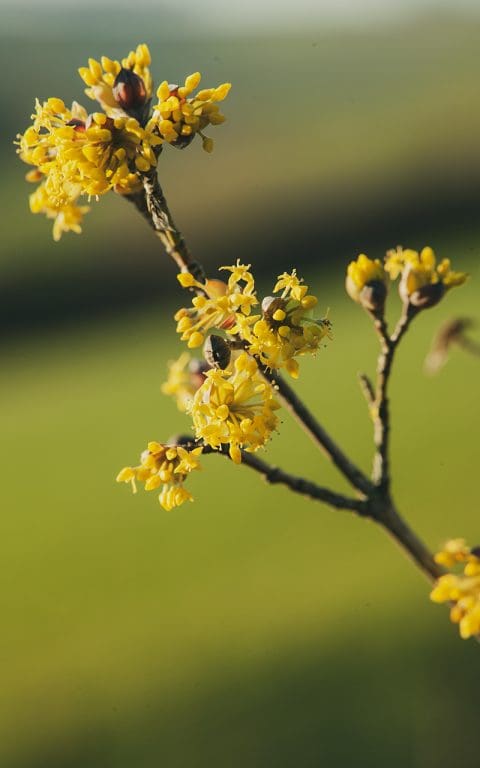
Words: Dan Pearson / Photographs: Huw Morgan
Published 16 February 2019
We have half a dozen mature hazels (Corylus avellana) that survived here for being out of reach of the grazing. They cling to the banks of the brook opposite our neighbour’s wood and were protected by a run of barbed wire that kept the cattle from the brook’s edge and, in turn, provided the trees with their own little sanctuary. Their domain, very sensibly, was over the water and into the shade, but it is remarkable how quickly a change of regime is marked in growth and, in the eight years without the cattle, their limbs have reached back over our land so that that you now have to duck as you approach. In their shadow I have been planting snowdrops, which like the moisture there in the winter and the drier influence of their roots in the summer.
The pools of catkin and snowdrop have made new places that we are drawn to explore when the winter is with us. Look down now on the wood from our perch on the hillside and the pale golden cast of the catkins reveal where the hazels run. Happy to live in the understory of the tall poplars above them, their rangy limbs topple like collapsed scaffolding where they have gone without coppicing, but you can read their preference for the hinterland. At the edges of the wood and where they step out from the high canopy and finger up the brook in the open crease at the bottom of the slopes, they look most contented. The billowing outline of one tree running into another reveals their true character and shows you where they thrive. Huddled on the edge of the wood where it is still and moist and sheltered.

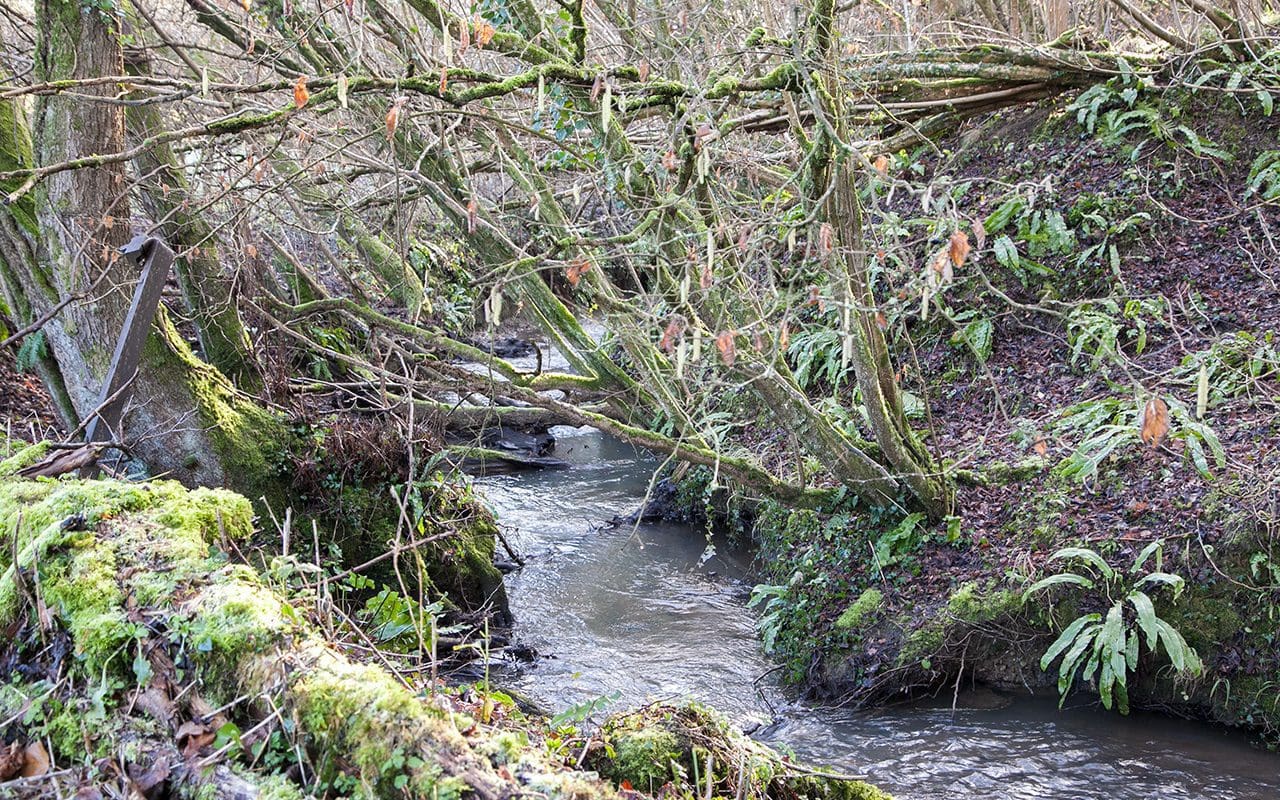
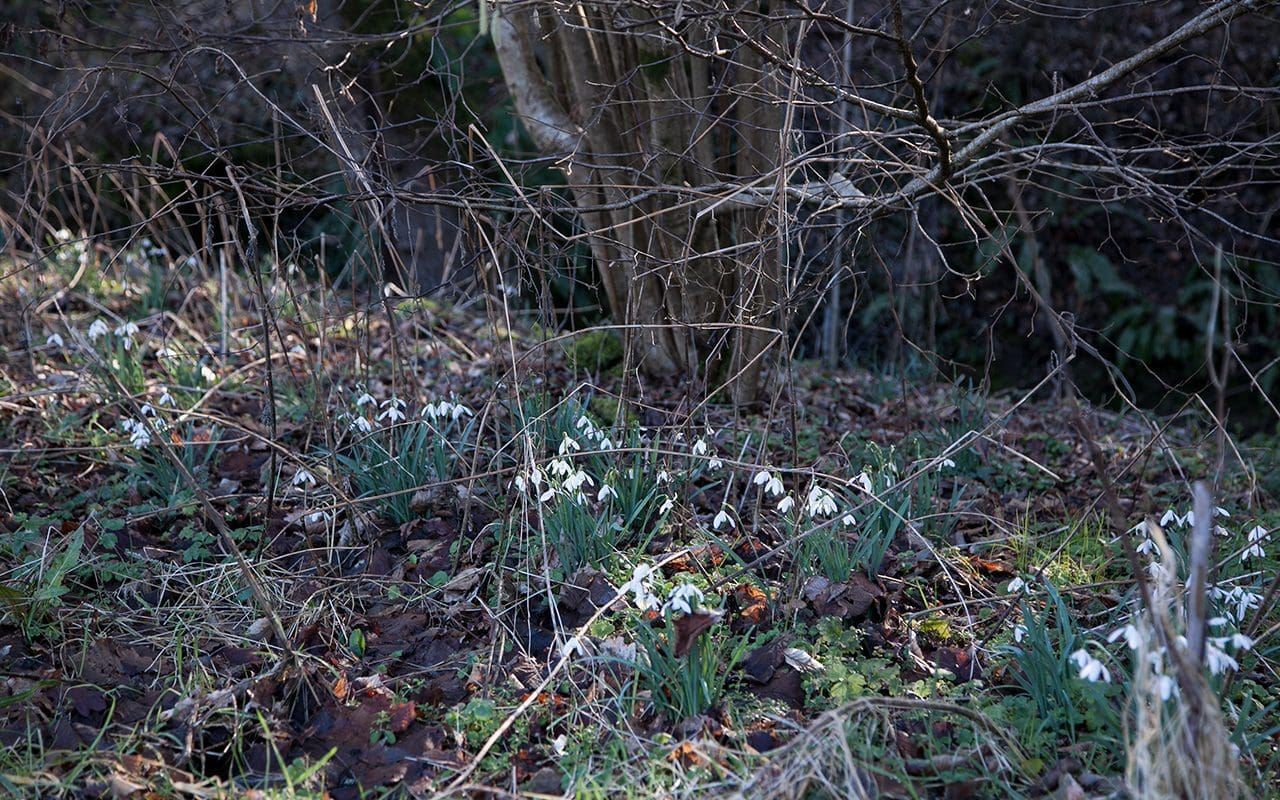
Walk the line of the hedges up the slope away from the wood and you find hazel here too. Nuts that were buried by squirrels and forgotten, but happy to be part of the hedgerow and its community. It is impossible to tell the age of the hazels that sit in the hedge, for they will take a regular cut and regenerate as a shrub rather than a tree, but they are probably as old as their cousins in the wood. Further up the hill again, where some of the hedges along the ditch were nothing more than a twist of barbed wire and bramble, it is often the hazel that has outlived its neighbours. By disentangling the wire from the bushes that had been habitually scalped by the flail and then kept in check by the cattle, a number have been freed and left to regenerate. Although you can see the previous brutal regime in their eldest limbs, they have shot from the base as hazels do and, in just eight years, we have the beginnings of a new grove.
Where I come from on the South Downs, the ancient coppices contain trees that are thought to be as much as a thousand years old. The original stumps have rotted away from the middle, but you can see the oldest plants in the coppice mapped in the close groupings of offsets that have radiated outward over time. New trees that have been deliberately layered (that is, rooted by bending the longest shoots to the ground and weighting them with a stone) stand at a sensible distance of about eight strides to give them room enough, but still with the company they need to draw new growth up and straight towards the light.
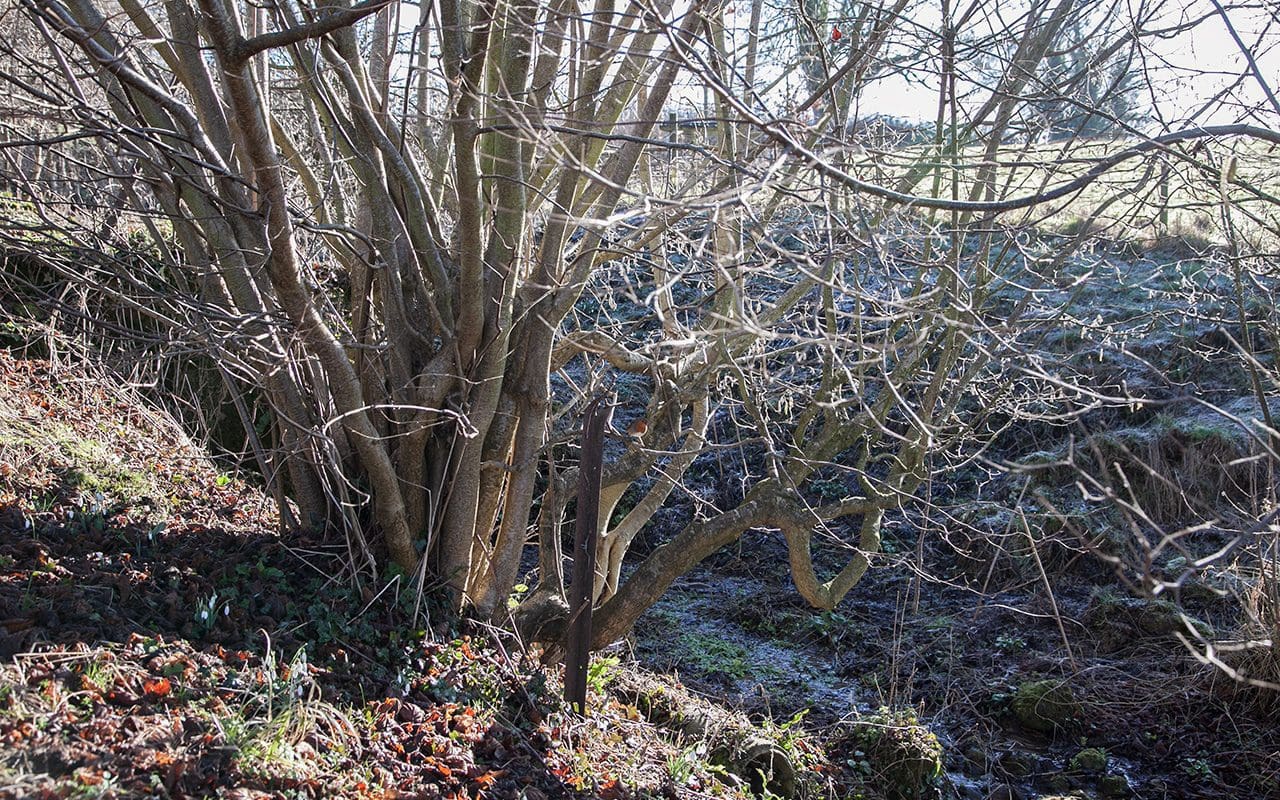

Coppicing extends the life of a tree and the industry around it traces our woodland symbiosis in a long and unbroken line of charcoal production as well as material for hurdles, furniture and building. Cut on an eight to twelve year rotation, a hazel coppice will regenerate fast, the trees touching again in four or five years, but not before a valuable interlude of light has been allowed to reach the woodland floor. Ephemeral woodlanders such as foxgloves seize this window of opportunity and bluebells, wood anemone and primroses take the chance to build up their strength before being cast once again into more permanent shade.
The best material from coppicing, which retains its pliability, is cut at the beginning of the winter. Later cuts between January and March produce wood that is prone to brittleness. The finer top growth is used for pea sticks, faggots and withies. The rods, which can run straight to four metres, are either split and used for hurdle making and building materials or, in my case, for plant supports in the kitchen garden. A twelve year rotation will also produce firewood. The brash and less useful brush is piled or woven over the coppiced stump to prevent the deer from nibbling the regenerating shoots. A year will see new growth push clear of the grazing line before the brash has rotted and returned to the ground.
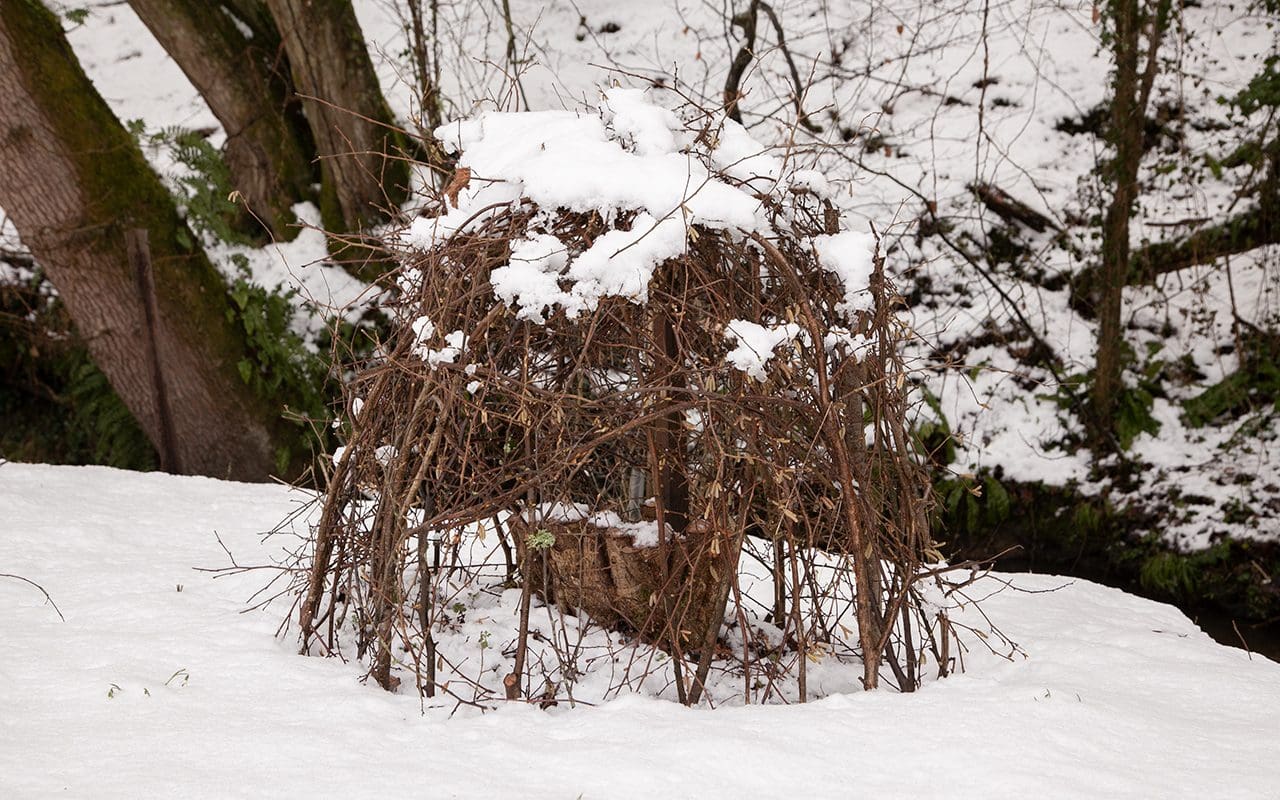
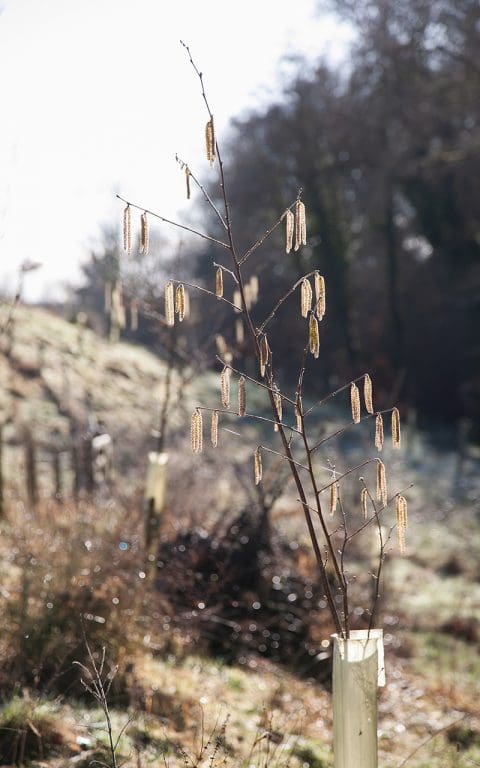
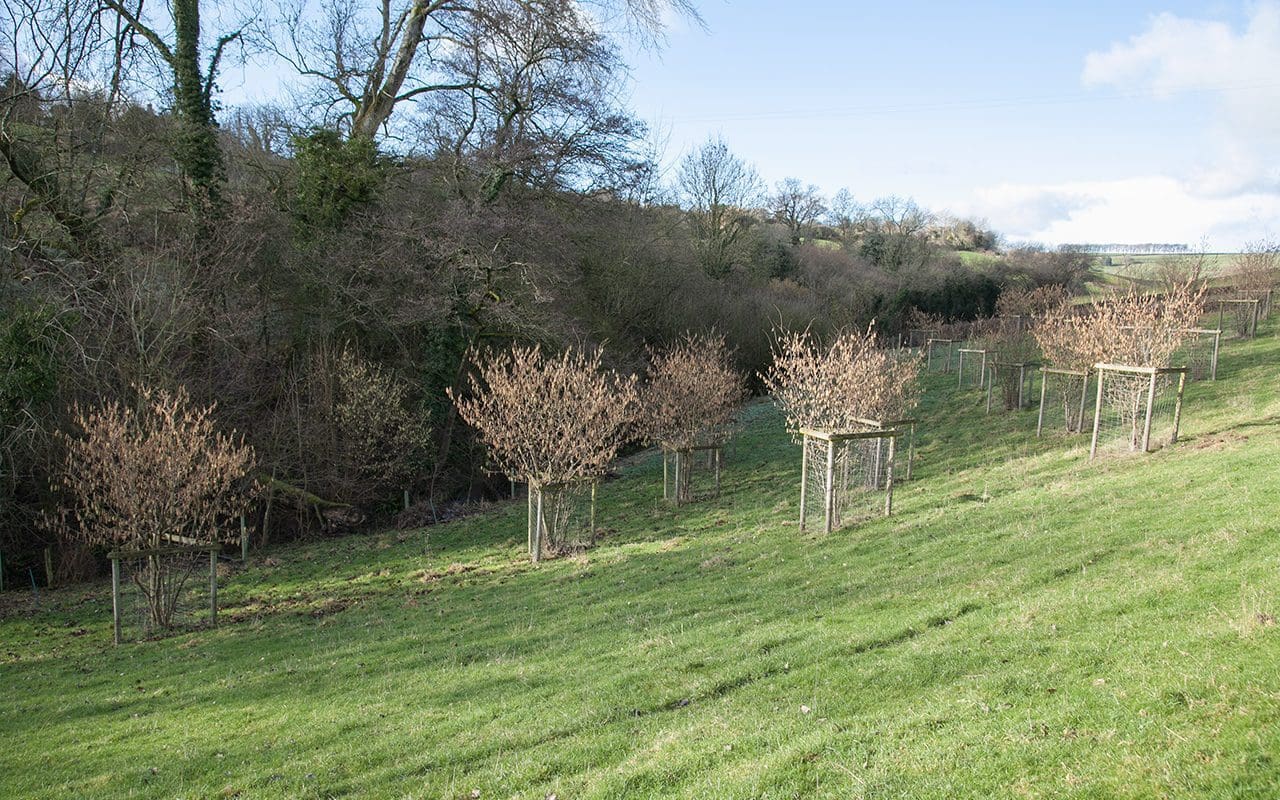
In the second winter here, having seen where the wild trees were happiest, I planted a grove of filberts and cobs below the new orchard. Cobs are Corylus avellana selections, filberts Corylus maxima. Though very similar in appearance to the native hazel, they are chosen for their superior nuts and are distinctive for their crested outer calyx. There are twenty one trees, three of each of seven varieties; ‘Webb’s Prize’, ‘Gunslebert’, ‘Kentish Cob’, ‘Cosford Cob’, ‘White Filbert’, ‘Butler’ and, naturally, ‘Pearson’s Prolific’. Though to date the squirrels have stripped them just days before we consider them ripe enough for our own consumption, we remain hopeful that in time we will get enough nuts to go round.
Staggered in an informal grid of eight metre spacing, the trees sit in grass and take the formality of the orchard down to meet the wood. For now they are protected with tree guards, so that I can let the sheep graze amongst them, but in time, when the canopy closes over, I will fence the nuttery in and bring the woodland floor into this area. Further downstream, a new informal coppice of straight hazel is set to join the mature trees that run the length of the stream. In five years’ time I am hoping they will be big enough to coppice. A cycle which may be repeated many times in the life of these young trees. Only a handful of times by me, but hopefully many more with their legacy.
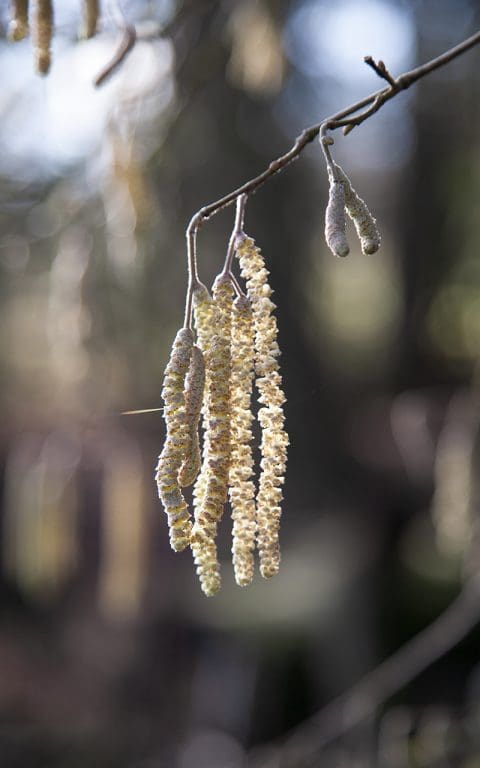
Words: Dan Pearson/Photographs: Huw Morgan
Published 2 February 2019
The snowdrops are just starting to hit their stride. Their new leaves and delicate white flowers pushing through bare soil have a freshness that is a welcome contrast to the prevailing mud and low light. It is also a time when, with straining post-festive season trousers, we tend to want to eat more freshly, craving simple greens and cleaner food as a balance to the richness common to many winter dishes.
The colours of the winter vegetable garden are as vital as the snowdrops, primarily green and white; leeks and Swiss chard, celeriac, turnips and parsnips. We have a bed of salsify which, after you have scrubbed and peeled the gnarly, whiskery roots, reveal flesh of an unexpected pristine, pearly whiteness. In the barn are the last of the stored potatoes. Then there are the brassicas; cabbages Savoy and Hispi, three types of British kale, one of Russian, Cavolo Nero and purple sprouting broccolis just beginning to form. However, the cabbages have suffered this year from the long, hot summer, with many not hearting up, and so we have been eking them out or using them raw in salads so that they go a bit further. This recipe uses just one large leaf per person.
Soups are the most regular feature of our winter eating – there is always one on the go – but they are most often made simply with one predominant vegetable. They are usually pretty fast affairs too, made on the hoof with quickly cooked onions, a limited number of flavourings and water straight from the tap. It can sometimes take half an hour or less to go from plot to soup bowl with a smooth, liquidised soup of carrot, pumpkin or parsnip.
This week, however, I felt like taking some time to make something with a little more care, which preserved the delicacy of the vegetables and featured a well-flavoured vegetable broth made with the trimmings. The addition of wholegrain hulled barley (rather than pasta or rice) and creamy cannellini beans makes for a particularly nutritious and filling soup. Barley has the added benefits of being rich in trace minerals and fibre, and has long been used medicinally to aid liver function and weight loss. Pearl barley can be used in its place, but is not a wholegrain, so lacking the benefits that they bring.
Although you could add any winter veg to this soup, the limited colour palette of green and white is refreshing and clean. Just looking at it makes you feel as though it is going to be good for you. If you have fennel, cauliflower, white beetroot or parsnip available, these could all be added to or replace any of the ingredients listed in the appropriate proportions. Although it is still a little early in the season, this soup is the perfect vehicle for a mix of foraged herbs and greens. So, if you are making this in a few weeks time, you could add wild chervil, wild sorrel, wild garlic, dandelion leaves, Alexanders or nettle tops to increase its somewhat virtuous, health-giving (and waistline-reducing) properties.
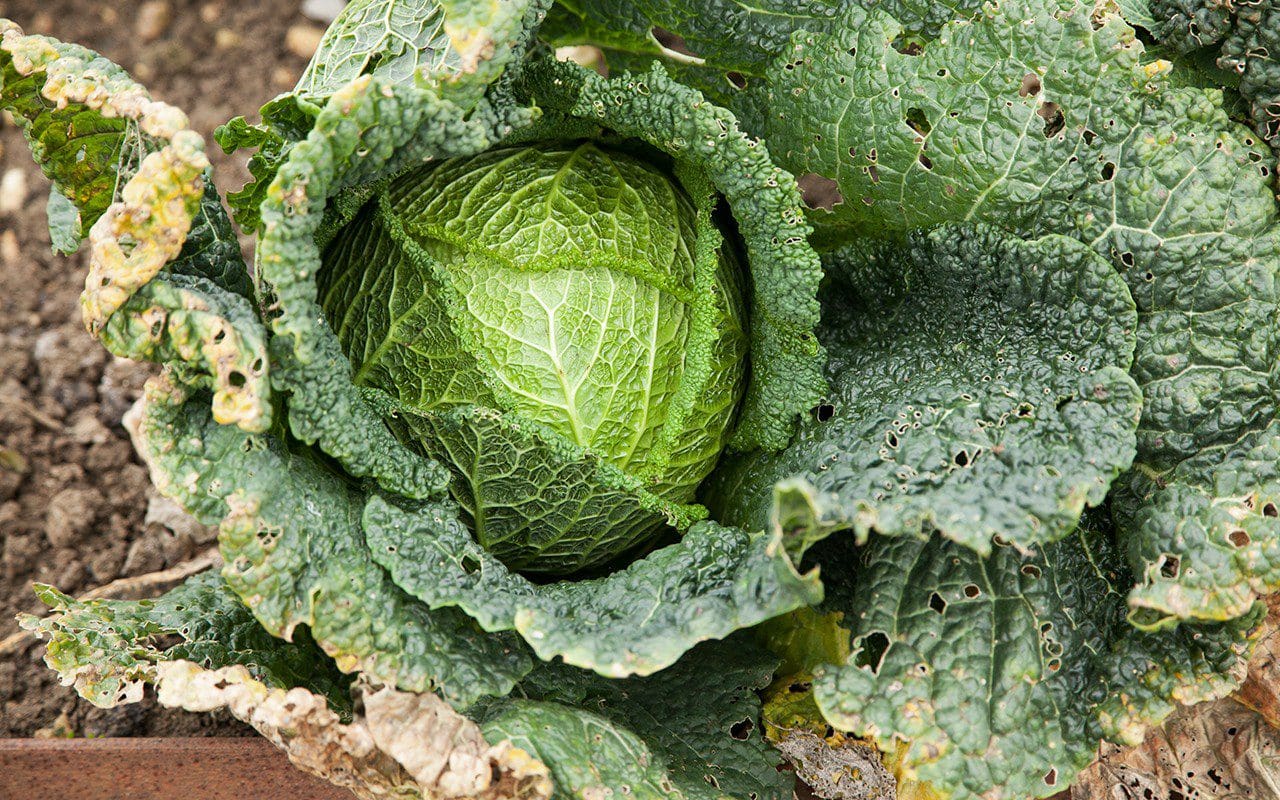 Savoy cabbage ‘Marner Grufewi’
Savoy cabbage ‘Marner Grufewi’
INGREDIENTS
1 small celeriac, to yield 250g cleaned and peeled
1 medium turnip, to yield 250g cleaned and peeled
3 large leeks, to yield 250g cleaned and trimmed
1½ litres water
1 large bay leaf
A small branch of thyme
A sprig of rosemary
A piece of Parmesan rind (optional)
1 teaspoon green peppercorns
1 unwaxed lemon, juiced
3 large of cloves garlic
100g hulled barley
4 leaves of Savoy cabbage
200g cooked cannellini beans
A good bunch of flat leaf parsley
Sea salt
Olive oil
Serves 6
 Celeriac ‘Prinz
Celeriac ‘Prinz
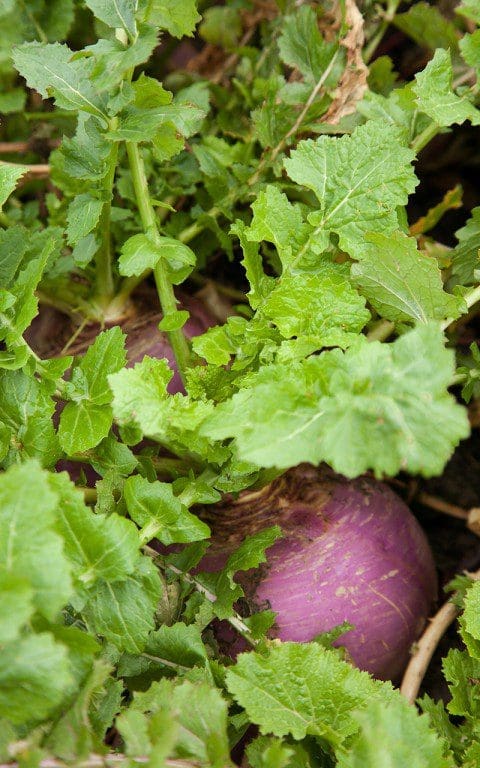 Turnip ‘Navet De Nancy A Feuille Entiere’
Turnip ‘Navet De Nancy A Feuille Entiere’
METHOD
Start by making the stock. Scrub the turnip and celeriac well to remove all soil. Remove the leaves, then peel. Rub the celeriac all over with one half of the juiced lemon to prevent browning. Reserve the best, young turnip leaves and the tender young central leaves of the celeriac, if it still has them. Put the peelings and the older leaves into a pan with the water.
Remove any browning leaves from the leeks, then cut off the dark green tops and wash off any soil under a cold running tap before adding them to the stock pan. Wash the cabbage leaves thoroughly. Remove the thick midribs with a sharp knife and put them into the pan. Tear the cabbage leaves into pieces about 4cm square and reserve.
Remove the leaves from the parsley and reserve. Add the stalks to the stock pan. Add the bayleaf, thyme, rosemary, Parmesan rind (if used) and half a teaspoon of the whole green peppercorns, coarsely crushed. Use a sharp knife or vegetable peeler to pare a 6cm long piece of lemon zest, being careful not to include any pith, and add this to the pan.
Put the pan on a high heat with a lid on and bring to the boil. Reduce the heat to a gentle simmer and cook for about 30 minutes. Strain the stock through a sieve, discard the vegetables, herbs and Parmesan rind and return the stock to the pan with the barley. Bring back to a gentle simmer, removing any scum that forms with a slotted spoon. Cook on a low heat with the lid on for 40 to 50 minutes until the barley is soft, but still has some bite.
While the stock and barley are cooking prepare the vegetables. Put the juice of half the lemon into a bowl with 500ml cold water. Cut the celeriac into 1cm square dice and put immediately into the acidulated water, to prevent browning. Cut the turnip into similar sized dice. Cut the white parts of the leeks on the diagonal into slices about 1cm thick. Reserve the pale green leek tops. Peel and finely chop the garlic.
Warm 2 tablespoons of olive oil in a large pan over a low heat. Add the garlic and white parts of the leeks. Stir to coat in the oil, then put the lid on the pan and allow to sweat for about 10 minutes until soft and translucent. Stir from time to time. They should not take on any colour. Drain the celeriac and add to the leeks together with the turnip. Stir. Replace the lid and continue to sweat over a very low heat for about 20 minutes until almost cooked, stirring from time to time.
Add the barley and cooking stock to the pan of vegetables together with the cannellini beans and return to a low heat. Season the soup with plenty of salt and the remaining green peppercorns, finely ground.
Slice the pale green tops of the leeks very finely. Coarsely chop the reserved celeriac leaves and parsley. When the soup has returned to a simmer add the cabbage. Cook for 2 to 3 minutes with the pan covered. Remove from the heat while the cabbage leaves are still bright green. Throw in the finely sliced leek tops, turnip and celeriac leaves and parsley and stir well. Check the seasoning and add lemon juice to brighten the flavours.
Ladle into warmed bowls and finish with a good amount of your best olive oil.
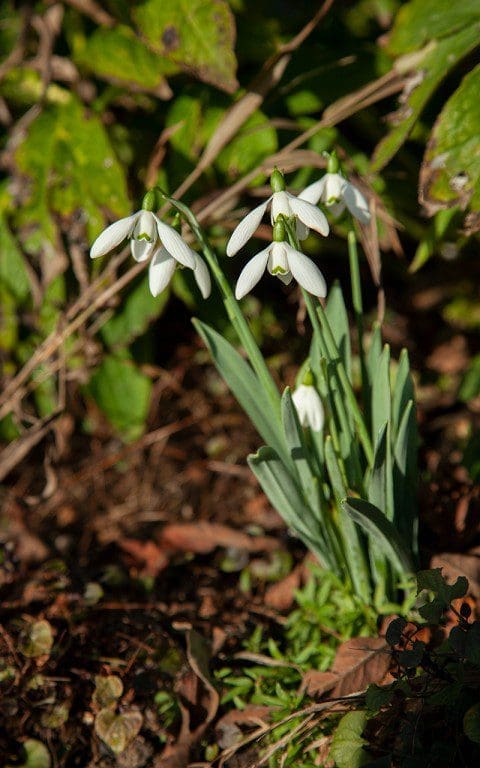
Recipe & photographs: Huw Morgan
Published 26 January 2019
The farmer here before us had grazed the land hard with the precious pasture or ‘grub’ taking precedence over the trees. Our neighbour has shown us photos of the valley when she was a girl, unrecognisable for the majestic elms in every hedge. When the elms came down during the 1960’s and ’70’s, their demise opened up the landscape and, save a handful of mature ash that run along the lane, the hedges have remained low and uninterrupted. On his last winter here, the year before we took over the land in 2010, the farmer scaled the solitary ash that stands proud on the slopes of The Tump and pollarded it back to its torso. The ancient pollards are a feature of the valley, for ash (Fraxinus excelsior) burns green and so is a valuable wood for winter fires. Our limbless pollard stood starkly that first November, just a small amount of regrowth marking the time the property had taken to come into our hands. Representing, as it did, the end of an era and the start of a new chapter, we immediately marked about thirty hedgerow ash so that, when the hedges were cut, they would be left to rise up and away to become new hedge trees. Though not a brilliant hedging plant, ash in a hedge are more than happy to take a yearly cut and, with the advantage of being already established in the hedge, they have raced away. In that first winter I planted another thirty ash whips that were winkled in where gaps opened up after removing elder and bramble. The young whips have to be watched for the first three years as they have competition for light and water from the hedge to either side, but as soon as they were tall enough I tied a ribbon to their leader so that the farmer who cuts our hedges can work around them.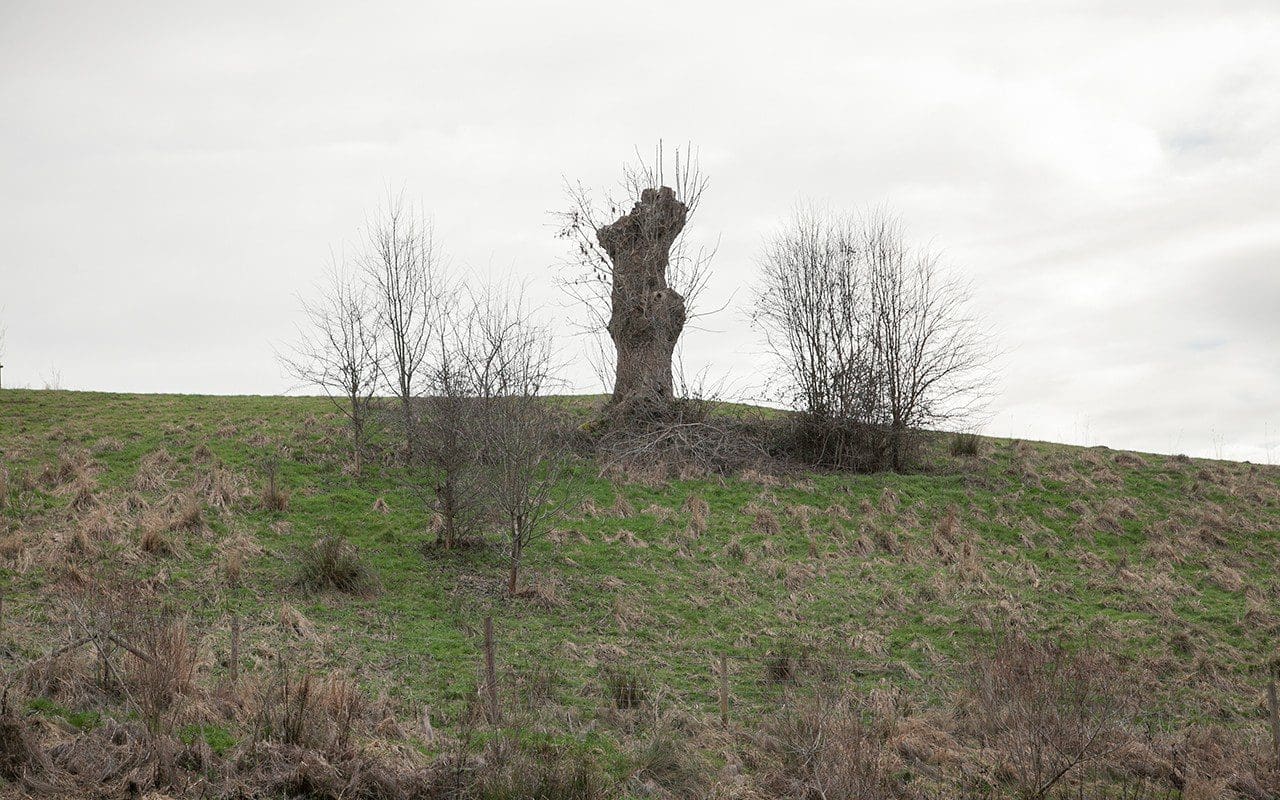 The old ash pollard on The Tump has now been joined by a number of self-seeded hawthorns
The old ash pollard on The Tump has now been joined by a number of self-seeded hawthorns
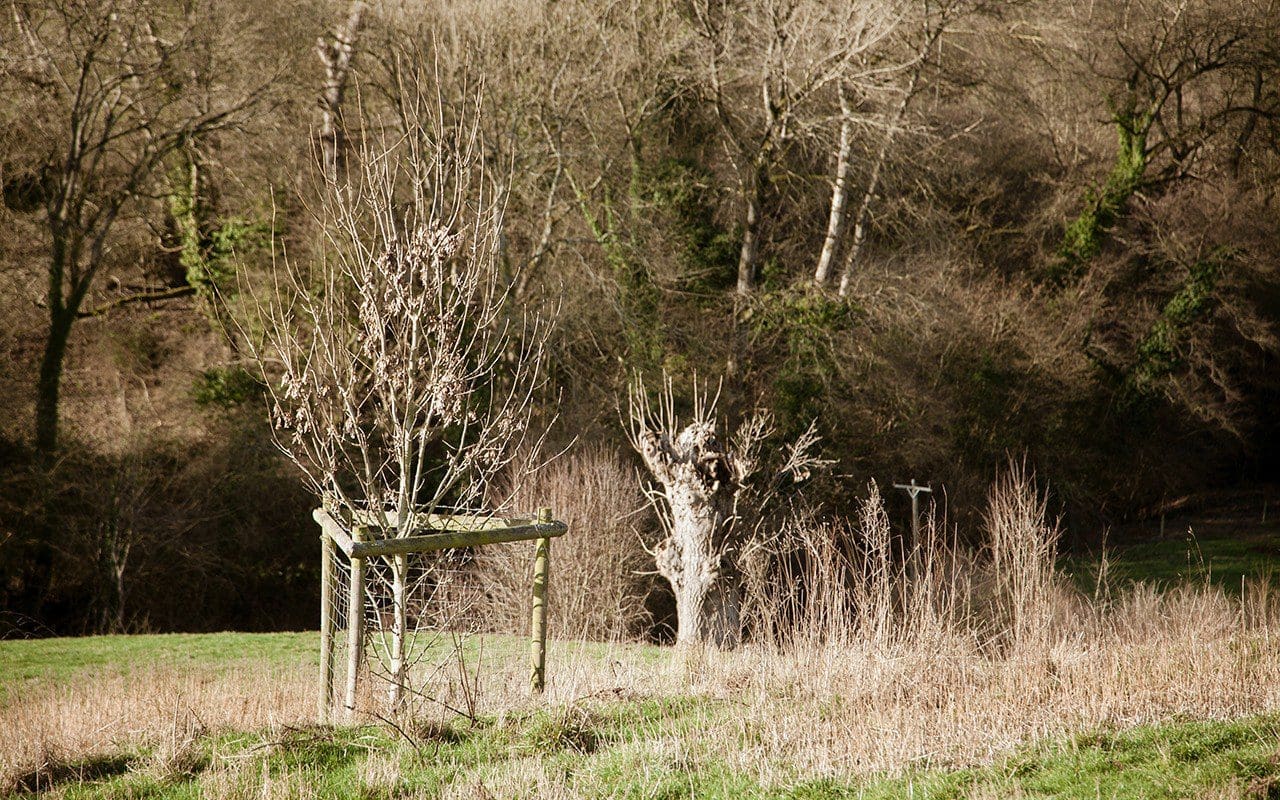 One of the ash planted eight years ago on the slopes above the old pollard, the top of which can be seen in the background
One of the ash planted eight years ago on the slopes above the old pollard, the top of which can be seen in the background
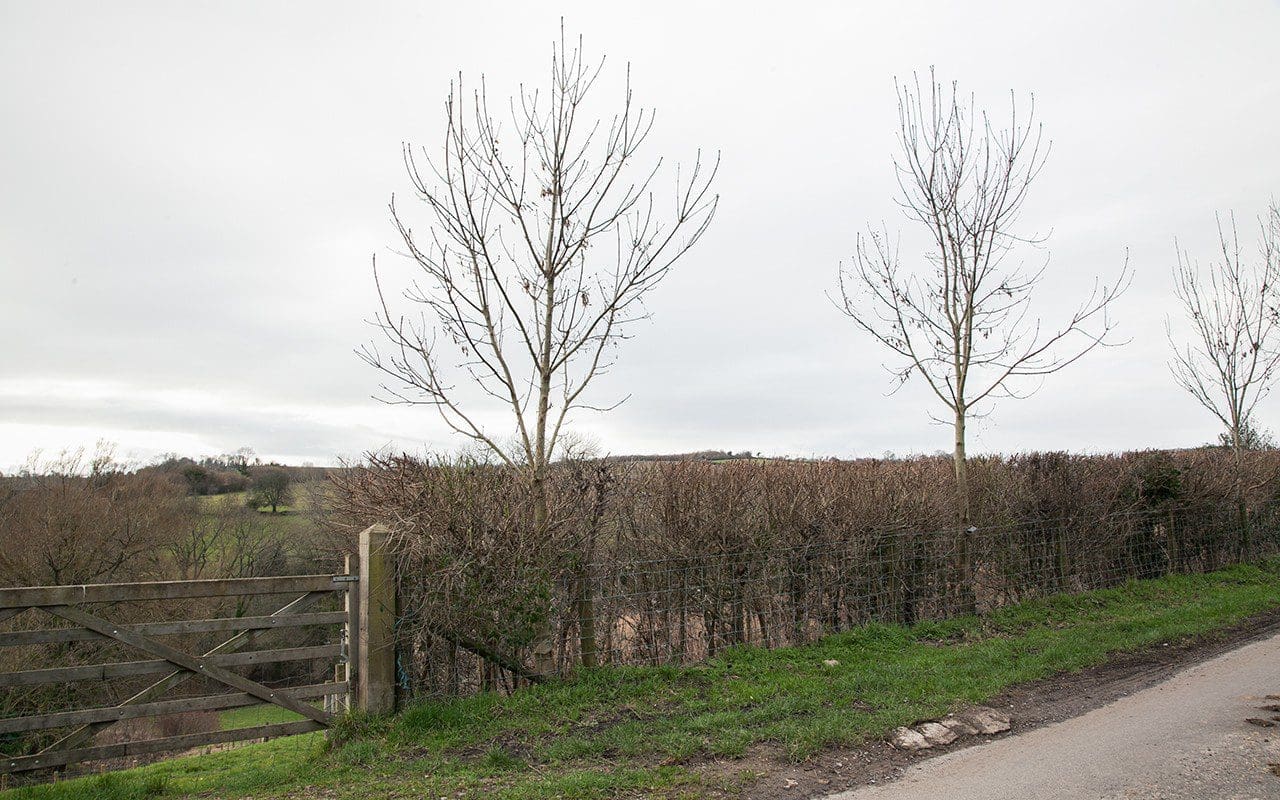 Three of the ash planted eight years ago into the hedge on the lane
It was a good plan, or so I thought, to have my hedge trees on a ten year rotation and pollard enough every year to fuel our wood burners. The spectre of ash dieback was first confirmed in the UK just two years later in 2012 and it is now sobering to think how quickly things can change. We discovered the first signs in some seedling trees about three years later and, although none of the trees I planted have been affected yet, my own plans of ash pollards are now in question. And then, as with the disappearance of the elms, there is the visual change we will inevitably see in the landscape, since ash is such a key and widespread component of our woodlands.
The initial panic that circulated in the press soon after the discovery of Chalara eased a little while we waited to see what happened. However, caused as it is by a fungus with wind-borne spores, it has taken only 6 years to become widespread and is now present in most of the country, bar the north of Scotland. What has become clear is that, once a tree is infected, the disease is usually fatal. However, mature trees can survive for some time and during that time they continue to make a valuable contribution to the local ecology and landscape. Ash are also profligate with their seed and scientific study into variability has already shown that a small number of trees are able to tolerate or resist infection.
Hopefully the strong will win out and, with that belief, my plans seem not entirely without hope. But what is becoming increasingly clear is that diversity is important and that no one environment should have all its eggs in the same basket. With this in mind, I have been widening my net and, every year since we came, I have made it a mission to broaden the palette of native trees on the land. There are several projects on the go and winter work includes hedge improvement and extension and the finding of places for long-termers that can step into the fields without making them difficult to manage with machinery.
Three of the ash planted eight years ago into the hedge on the lane
It was a good plan, or so I thought, to have my hedge trees on a ten year rotation and pollard enough every year to fuel our wood burners. The spectre of ash dieback was first confirmed in the UK just two years later in 2012 and it is now sobering to think how quickly things can change. We discovered the first signs in some seedling trees about three years later and, although none of the trees I planted have been affected yet, my own plans of ash pollards are now in question. And then, as with the disappearance of the elms, there is the visual change we will inevitably see in the landscape, since ash is such a key and widespread component of our woodlands.
The initial panic that circulated in the press soon after the discovery of Chalara eased a little while we waited to see what happened. However, caused as it is by a fungus with wind-borne spores, it has taken only 6 years to become widespread and is now present in most of the country, bar the north of Scotland. What has become clear is that, once a tree is infected, the disease is usually fatal. However, mature trees can survive for some time and during that time they continue to make a valuable contribution to the local ecology and landscape. Ash are also profligate with their seed and scientific study into variability has already shown that a small number of trees are able to tolerate or resist infection.
Hopefully the strong will win out and, with that belief, my plans seem not entirely without hope. But what is becoming increasingly clear is that diversity is important and that no one environment should have all its eggs in the same basket. With this in mind, I have been widening my net and, every year since we came, I have made it a mission to broaden the palette of native trees on the land. There are several projects on the go and winter work includes hedge improvement and extension and the finding of places for long-termers that can step into the fields without making them difficult to manage with machinery.
 A newly planted oak has a temporary tree guard
A newly planted oak has a temporary tree guard
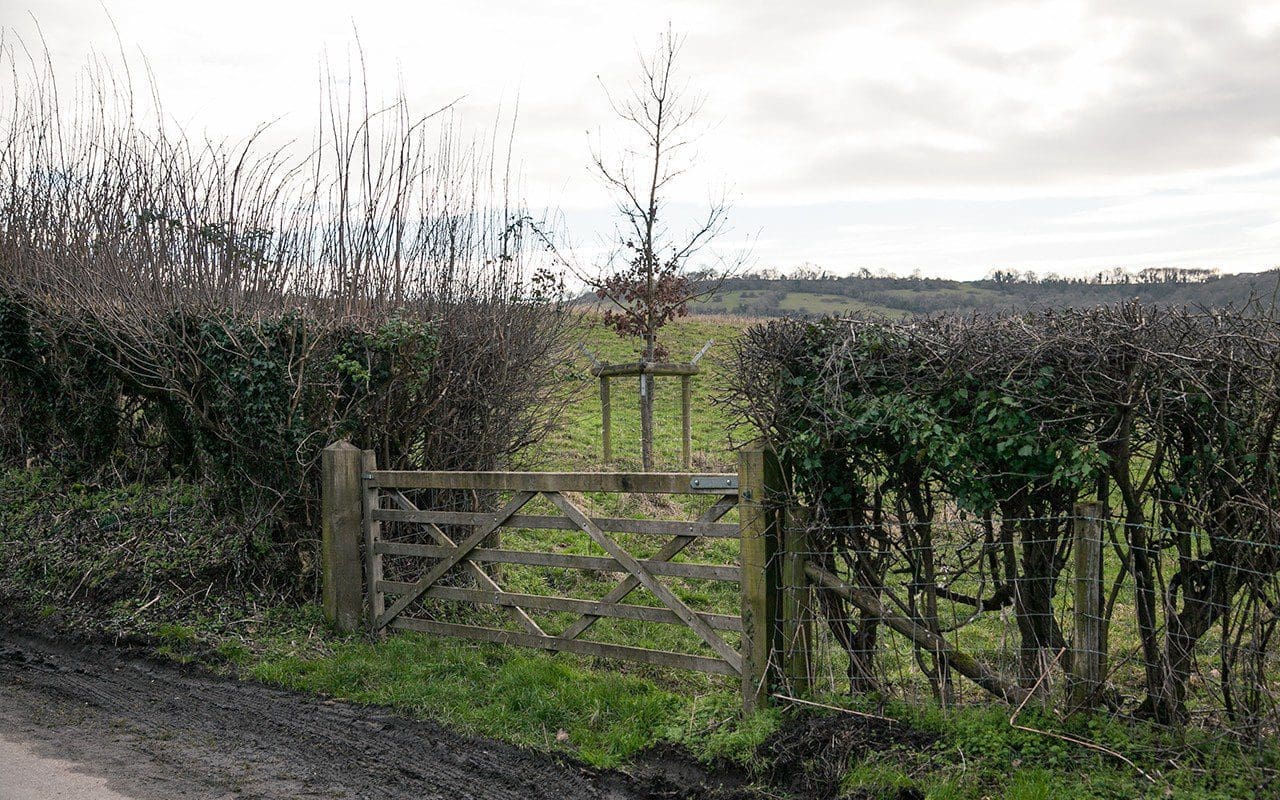 A gate marker oak planted 4 years ago
Every year I have planted a handful of English oaks (Quercus robur), using them as markers by gates (main image, the large trees are ash) so that you can both locate the breaks in the hedges from a distance and to make a place of the gate; a place to stop in the shade or somewhere for the animals to gather in the heat of the day. Although with climate change there is some speculation as to the long-term suitability of oak in Southern England, my hope is that the combination of our hearty soil and the spring lines that run through the slopes will give them their best chance. Oak has the highest biodiversity count of all native trees and so I am also planning for the life that comes with them.
As gaps have opened up as I upgrade our old hedgelines by stripping them of dominant runs of bramble, elder and old man’s beard, I have been adding common lime to replace the ash should they fail as hedge trees. Tilia x europaea is a beautiful tree if you have the room, not just for its vibrant leaf colour, but for the perfume of the flowers and the benefit these have for the bees and us, as it comes in quantity and makes a delicious tea. Once again, the trees will need extra care and, with this in mind, I made sure they were all planted before the end of the year so that their hair roots can get the best possible chance of being in contact with the soil before the spring. The trees were also given a good mulch of compost to hold in the moisture.
A gate marker oak planted 4 years ago
Every year I have planted a handful of English oaks (Quercus robur), using them as markers by gates (main image, the large trees are ash) so that you can both locate the breaks in the hedges from a distance and to make a place of the gate; a place to stop in the shade or somewhere for the animals to gather in the heat of the day. Although with climate change there is some speculation as to the long-term suitability of oak in Southern England, my hope is that the combination of our hearty soil and the spring lines that run through the slopes will give them their best chance. Oak has the highest biodiversity count of all native trees and so I am also planning for the life that comes with them.
As gaps have opened up as I upgrade our old hedgelines by stripping them of dominant runs of bramble, elder and old man’s beard, I have been adding common lime to replace the ash should they fail as hedge trees. Tilia x europaea is a beautiful tree if you have the room, not just for its vibrant leaf colour, but for the perfume of the flowers and the benefit these have for the bees and us, as it comes in quantity and makes a delicious tea. Once again, the trees will need extra care and, with this in mind, I made sure they were all planted before the end of the year so that their hair roots can get the best possible chance of being in contact with the soil before the spring. The trees were also given a good mulch of compost to hold in the moisture.
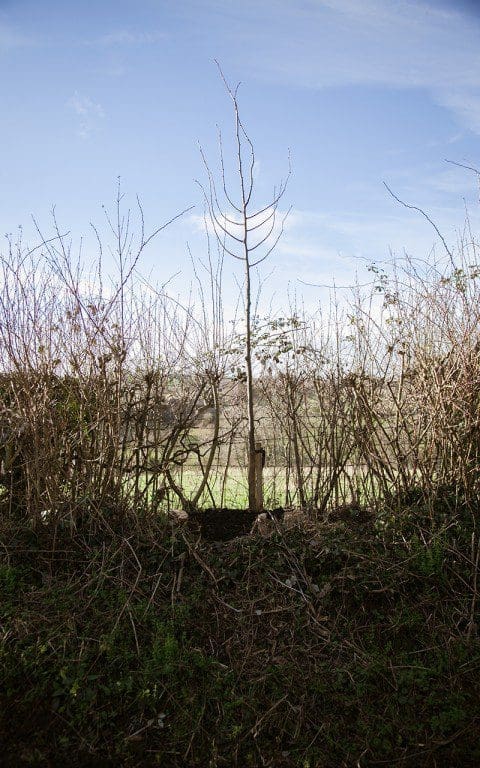 One of the new limes planted as hedge trees
Hedge trees are space efficient and their presence along the lanes as another storey above the hedgeline produces protected microclimates and a stillness that harbours insects. The bats run through these fertile air pockets, using them as feeding corridors, as do the birds that benefit from cover from predators. When we first arrived here one of the first things we noticed was the lack of birdlife near the house, with no trees and scalped hedges. We have quickly seen them return, as the trees have risen up to provide shelter, shade and perches for chatter or prey-watching.
One of the new limes planted as hedge trees
Hedge trees are space efficient and their presence along the lanes as another storey above the hedgeline produces protected microclimates and a stillness that harbours insects. The bats run through these fertile air pockets, using them as feeding corridors, as do the birds that benefit from cover from predators. When we first arrived here one of the first things we noticed was the lack of birdlife near the house, with no trees and scalped hedges. We have quickly seen them return, as the trees have risen up to provide shelter, shade and perches for chatter or prey-watching.
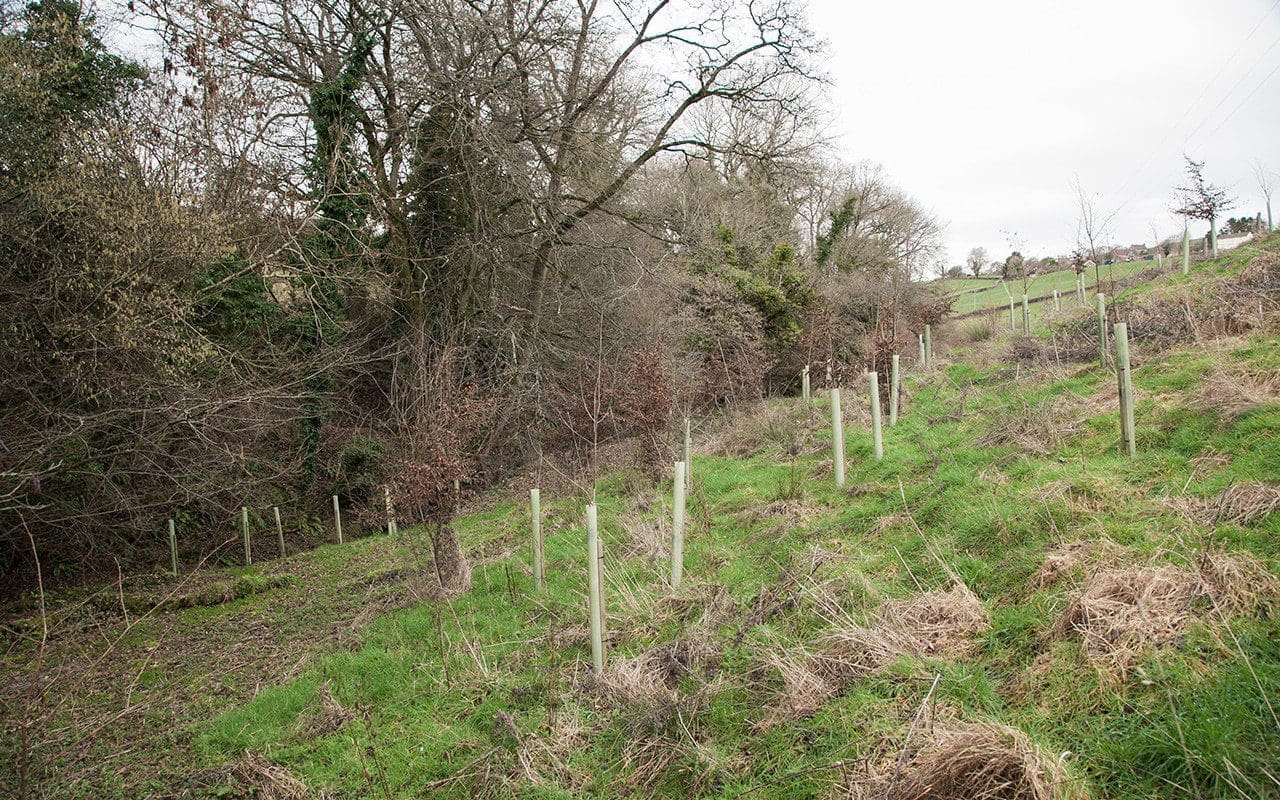 Part of the area of hornbeam and hazel coppice on the lower slopes of The Tump above the stream, which were planted 4 and 5 years ago
Part of the area of hornbeam and hazel coppice on the lower slopes of The Tump above the stream, which were planted 4 and 5 years ago
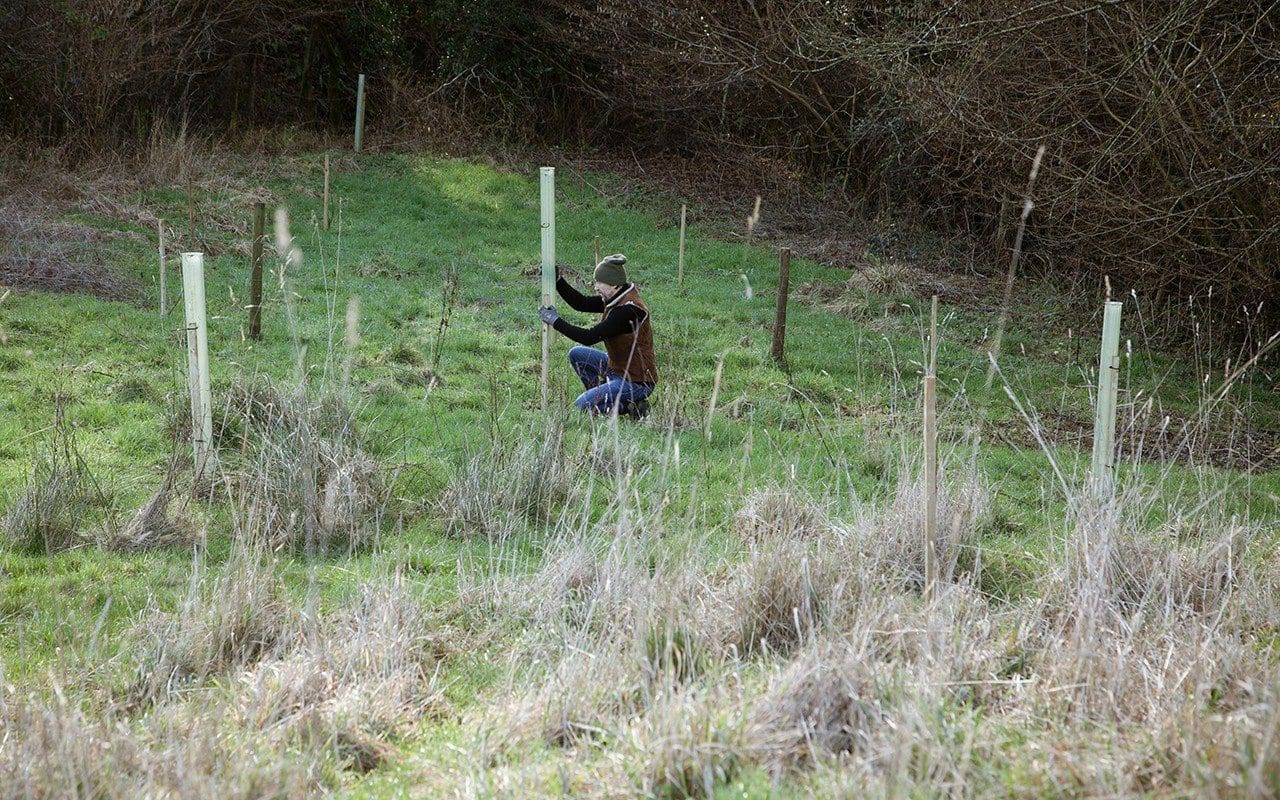 Dan putting tree guards on the newly planted coppice of hazel and sweet chestnut
For the last five years I have been slowly extending a new coppice in the hollow where the field dips away too steeply to the stream edge for haymaking. Thirty trees a year now sees the beginnings of something. Oak, to form a high canopy, and hornbeam and hazel, which will be put on a coppice rotation of twelve and eight to ten years respectively. This year I added some sweet chestnut to see if we can harvest our own poles for fencing in years to come. The coppice will provide the firewood I might be short of should the ash fail, and species variation within it will be good for ringing the changes in the ecology as we work from end to end over the course of a cycle.
It is a good feeling to this year have reached the end of the planted area and to be able to look back from the little whips which have just gone in to the progress mapped in year-on-year growth on the slopes beyond. This next chapter is begun.
Dan putting tree guards on the newly planted coppice of hazel and sweet chestnut
For the last five years I have been slowly extending a new coppice in the hollow where the field dips away too steeply to the stream edge for haymaking. Thirty trees a year now sees the beginnings of something. Oak, to form a high canopy, and hornbeam and hazel, which will be put on a coppice rotation of twelve and eight to ten years respectively. This year I added some sweet chestnut to see if we can harvest our own poles for fencing in years to come. The coppice will provide the firewood I might be short of should the ash fail, and species variation within it will be good for ringing the changes in the ecology as we work from end to end over the course of a cycle.
It is a good feeling to this year have reached the end of the planted area and to be able to look back from the little whips which have just gone in to the progress mapped in year-on-year growth on the slopes beyond. This next chapter is begun.
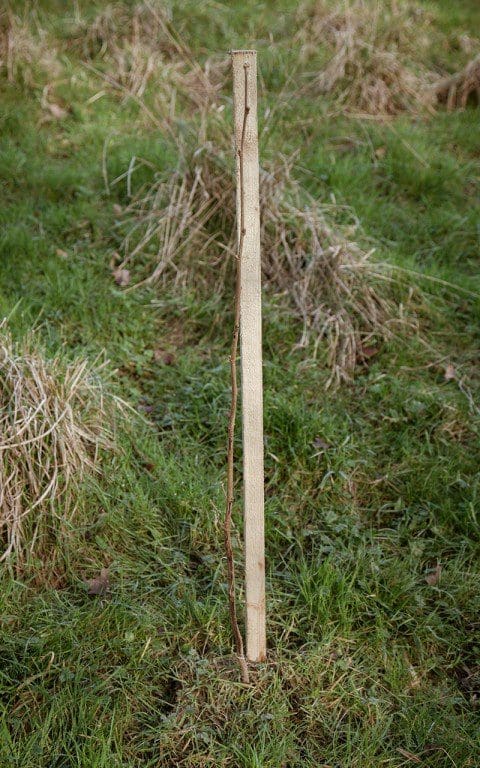 Words: Dan Pearson / Photographs: Huw Morgan
Published 19 January 2019
Words: Dan Pearson / Photographs: Huw Morgan
Published 19 January 2019 Four years watched from seed
Pale crook necks rise as all sleep
Ruff-collared aconite
Words: Huw Morgan & Dan Pearson / Photograph: Huw Morgan Published 12 January 2019
Winter is a time to look. Where the sky had its limits when we looked up and out from the garden in London, here on our hillside we see as far as the eye can in every direction. This makes an enormous difference, for grey skies are rarely simply just that. They are layered and nuanced and seldom dull. The garden is the same and far from monochrome once you allow your eye to register new colour and form in the skeletons.
We leave the garden alone now so that we can take in this apparent stasis and appreciate a different, more attentive way of seeing. The first observation is that the garden is full of birds, some at ground level foraging for fallen seeds and others flitting from limb to limb rummaging through seed cases and searching for the insects that also harbour there. Stripped back, but far from lacking, the greens and colours of the growing season are replaced by something arguably just as beautiful. Blacks and inky brown-purples, cinnamon, sepia and silvery whites. The charcoal end of the spectrum darkening on a wet day, the pale tones warming and, in dry weather, the contrasts between light and dark opening out so that you register form and structure as you might with black and white film.
With time slowed down and the room to look, you see how important it is to understand your plants in their winter incarnation. A garden cut back and put away in the name of tidiness will never allow you to witness the low light caught, arrested and sometimes incandescent in spent seed heads and desiccated grasses. On a bright day the shadows of what came before provide another focus, sharply tuning your eye to the way your plants are constructed and to the movement in their wintry limbs. Though this pause in growth may find us pining for life again, the garden is far from static as the winter continues to weather what is still standing.
This is just the first chapter and it won’t be until the beginning of February, the mid-way point between the winter solstice and the spring equinox, that we begin to see a loosening of its grip. The Pagan celebration of Imbolc around the first and second of next month marks this first day of spring and, true enough, you can usually feel a shift through the garden and what is happening in the hedgerows. Snowdrops moving towards their zenith and, at the base of the perennials that are still standing, a new sturdiness in now visible rosettes.
This year I am writing a long overdue book about the Tokachi Millennium Forest in Hokkaido. This means that I will be writing for Dig Delve fortnightly so that I can do both. However, in the weeks when I can’t write a full article Huw and I will still be making a weekly contribution. A visual and verbal haiku of sorts with a photograph and some words that will try to capture a thought, observation or moment here in the garden in the week it is published. We will be aiming to pin down moments of close observation and focussed attention. In so doing we hope to dig deeper into why the garden and our surrounding landscape help ground us and keep things in the moment.
Words: Dan Pearson / Photographs: Huw Morgan Published 5 January 2019
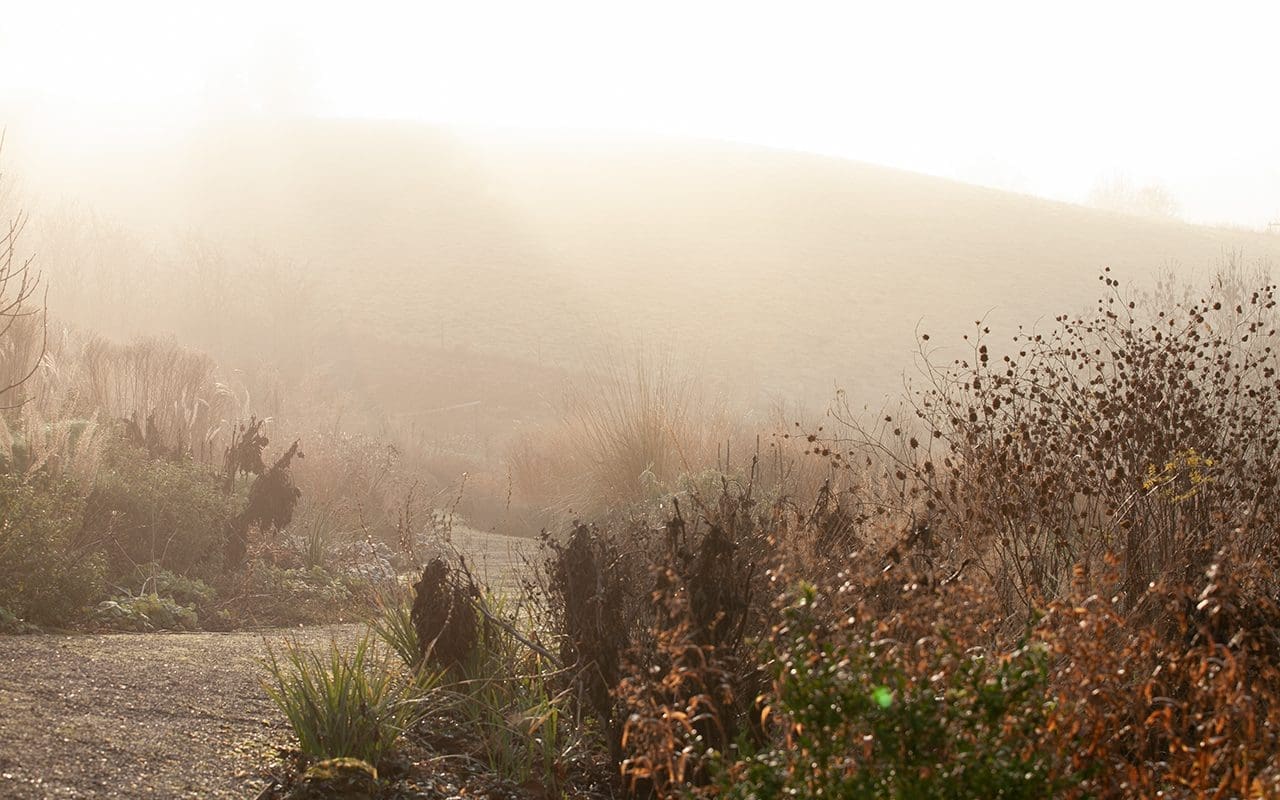
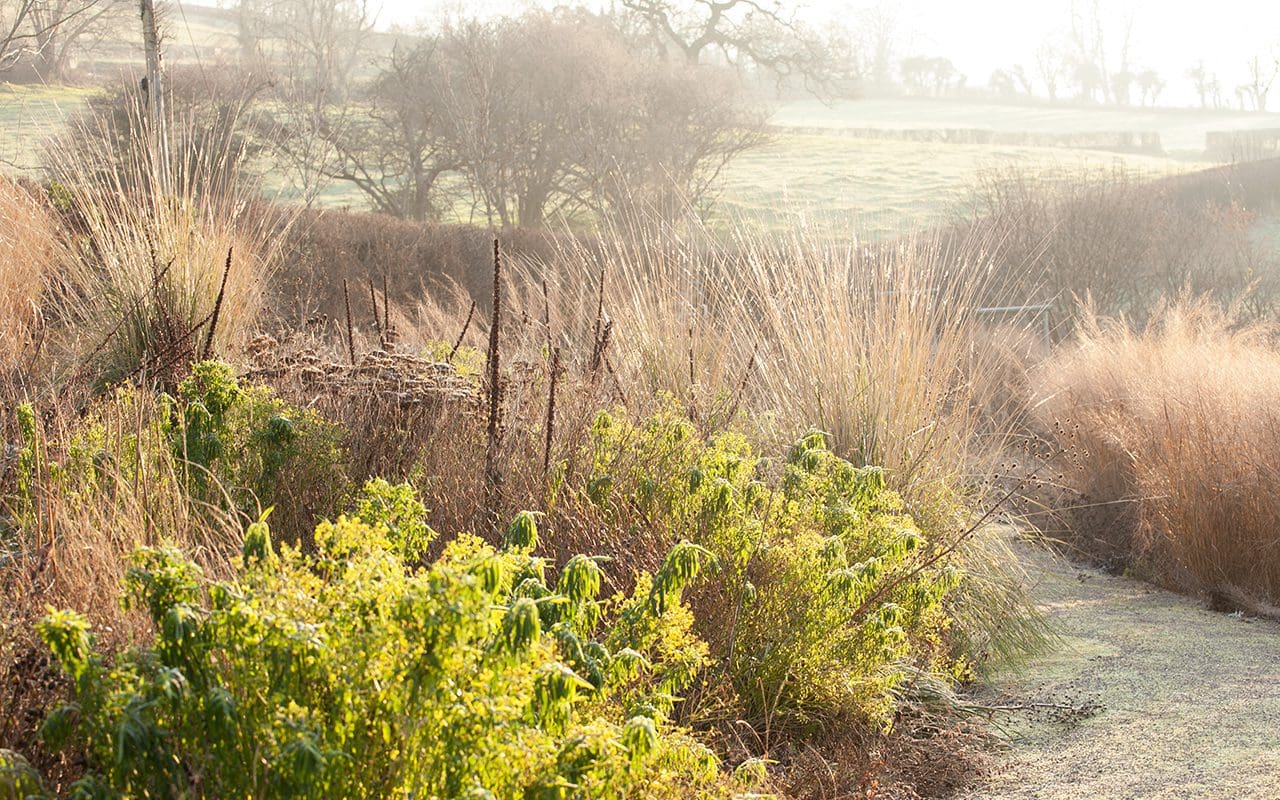
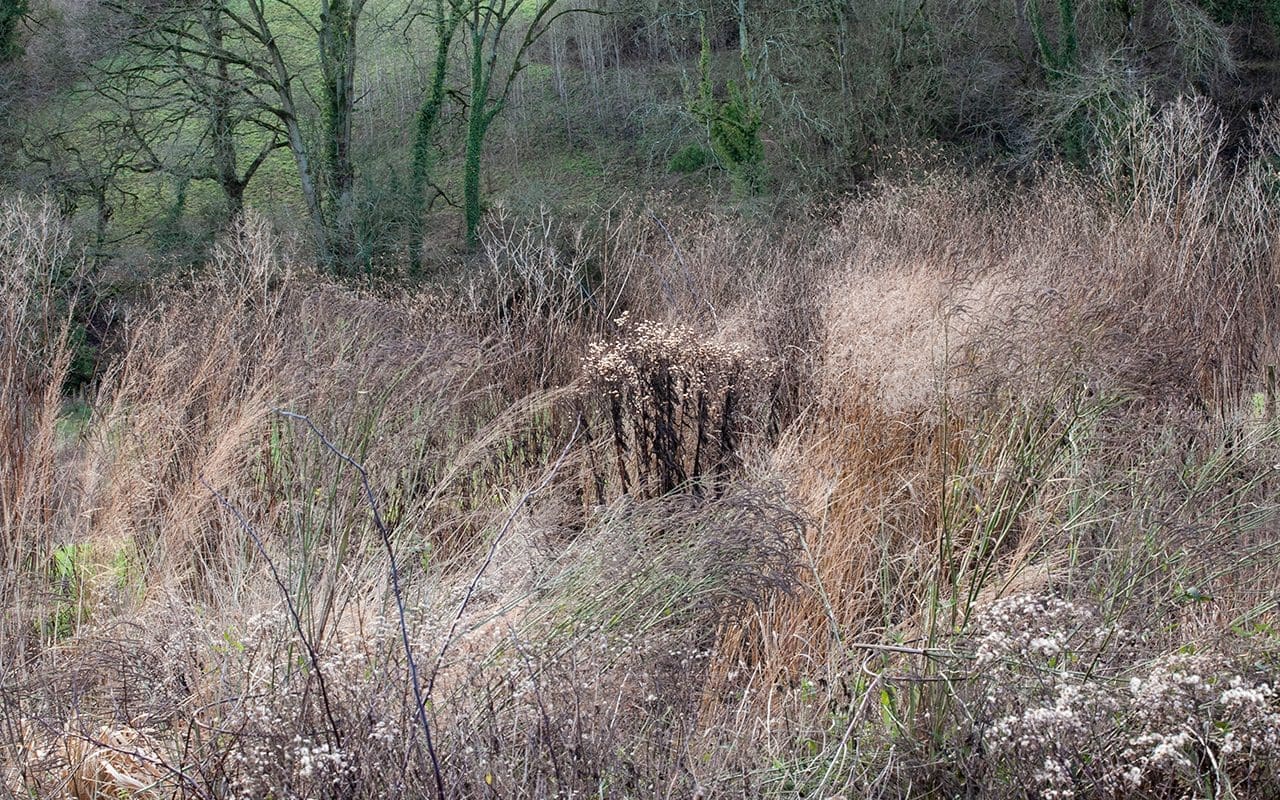
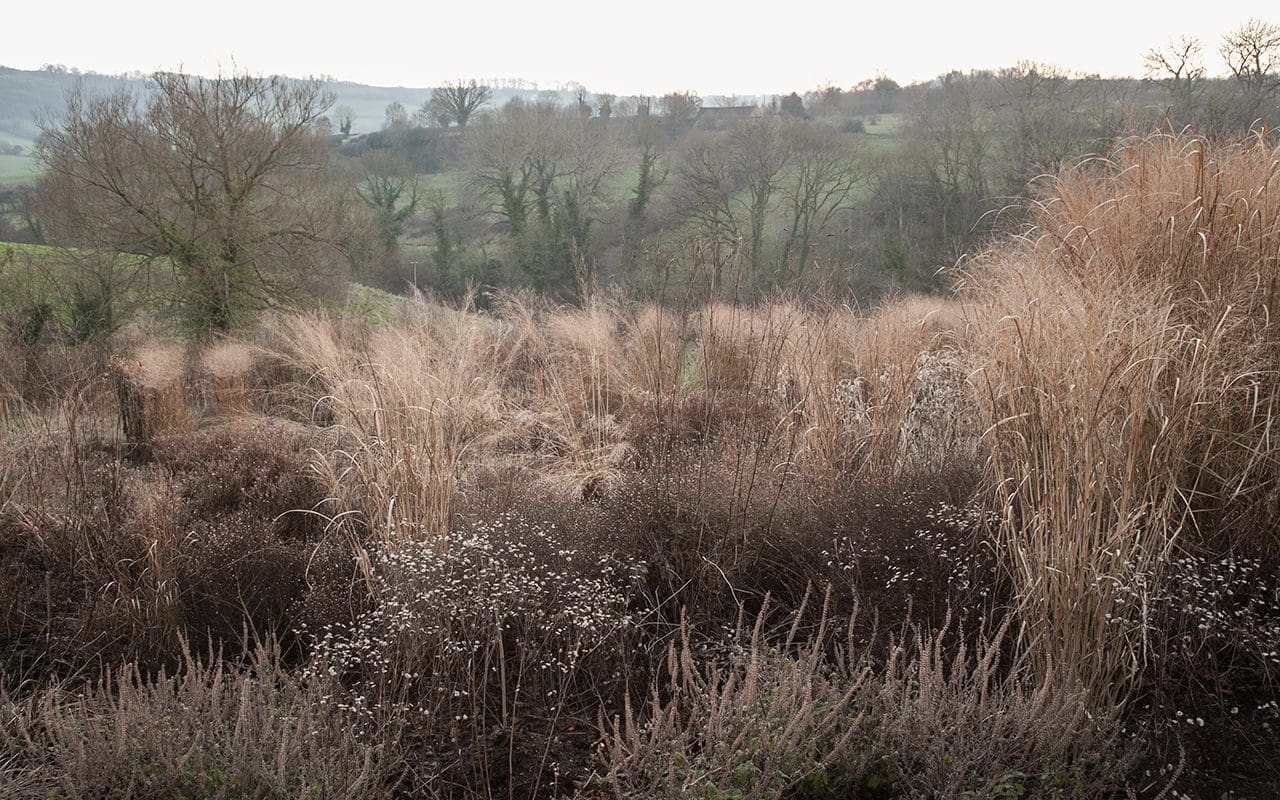
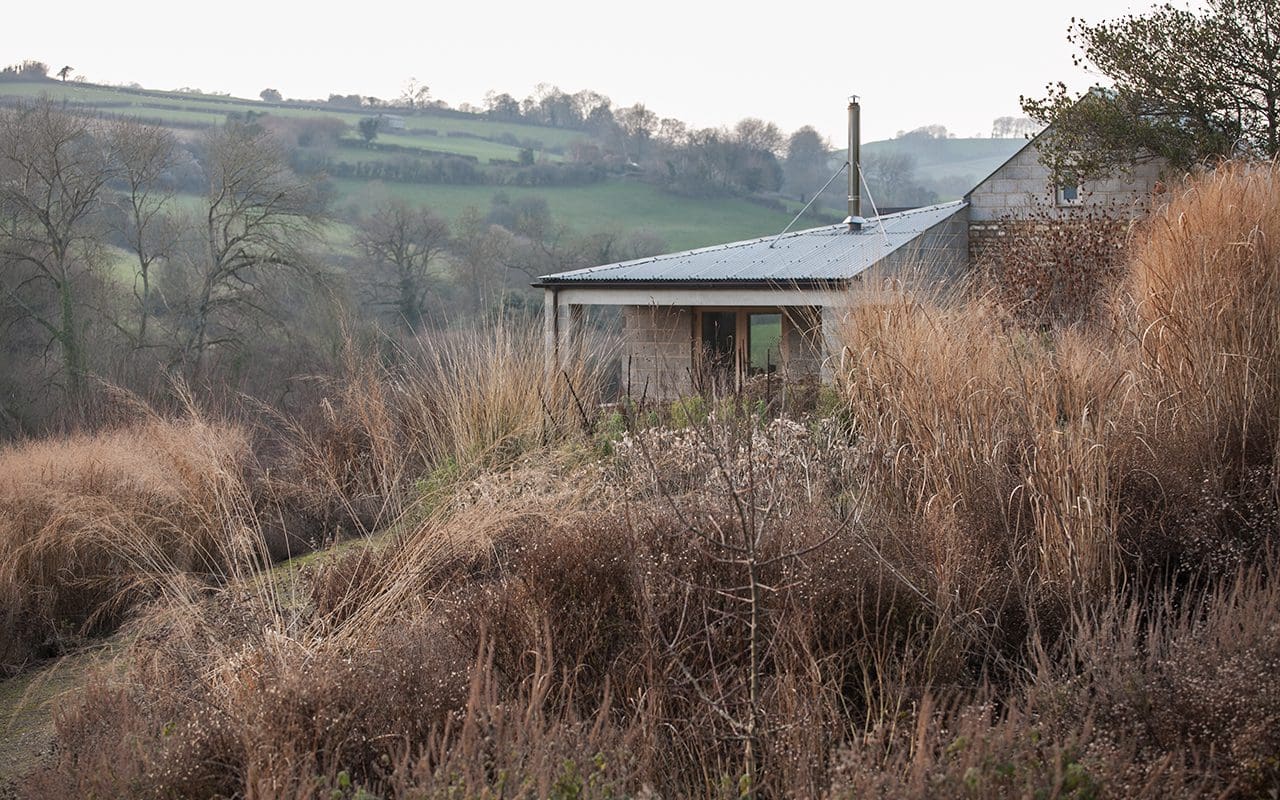
Thank you for your interest, support and encouragement this year. Wishing you a very happy Christmas and a peaceful New Year.
I love pumpkin, I really do, but given the success we have with them here, the number in the toolshed hardly seems to decrease through the winter, no matter how often we eat them. 42 (this year’s total down on last year’s 86, when we had a much larger pumpkin patch) is a lot of pumpkin to get through and the winter squash mountain creates a kind of recipe-blindness that renders me incapable of thinking up anything more exciting than soup, roast or mash.
Of course, we do make risotto, with thyme, saffron and bay, and pastas sauced with pumpkin and ricotta, served with crisp sage leaves fried in butter. I have made pumpkin gnocchi and pumpkin lasagne. Japan offers contrasting ways of experiencing squash, from the crisp succulence of paper thin slices of tempura to earthy, peasant stews of pumpkin and aduki beans, the comfort food of panko-crumbed pumpkin croquettes or hunks poached in shiitake mushroom stock with ginger and spring onions. But I am always on the lookout for new ways to diminish the pumpkin pile.
The natural sweetness of pumpkin lends itself to use in dessert dishes and, like carrot, parsnip and beetroot, can be useful if you are trying to reduce the amount of processed and refined sugar in your diet. However, the best-known sweet squash dish, pumpkin pie, has never really appealed, due in large part to those unappetising tins of pre-cooked pumpkin puree that appear in the shops before Halloween. I have also been a little wary of the Americanisation of our seasonal diet with the recent proliferation of pumpkin spice cupcakes and lattes. However, warm spices are a natural partner for pumpkin in both savoury and sweet dishes and I devised this spiced cake as a lighter option than the traditional heavy fruit cake, which can be too rich at this time of year. A hybrid of carrot cake, gingerbread and lebkuchen, it is also quick to make and to decorate at a time when every minute counts.
It is crucial to choose a dry variety of pumpkin, otherwise the water content can result in a wet, gluey cake. Having trialled many varieties over the years we now grow only kabocha (‘Cha-cha’) and onion squash (‘Uchiki Kuri’) as they have the best flavour and for us they are the best keepers. With its fudgy, chestnut-flavoured flesh the kabocha squash is the best choice here, but if you can’t get it butternut squash is an acceptable replacement. The pumpkin can be cooked ahead of time whenever you are using the oven. Combined with dates and maple syrup it creates a cake that is naturally sweet and moist, making it a very good keeper, so it’s useful to have one around at this time of year when unexpected visitors come calling. The balance of spices can be adjusted to personal taste or depending on what’s in the pantry, but for the very best flavour they should all be as fresh as possible and ground in either a mortar or a spice mill.
If you have a Bundt tin this cake looks effortlessly festive with just a heavy coat of icing sugar. If making in a simple square or round tin I would be inclined to finish it with a dressier coat of cream cheese icing sweetened with unrefined icing sugar and maple syrup, and worked into snowy peaks.
 Pumpkin ‘Cha-cha’
Pumpkin ‘Cha-cha’
INGREDIENTS
Cake
300g cooked pumpkin
200g soft dates (weight with stones removed)
100ml maple syrup (or honey)
250ml rapeseed, sunflower or other light oil
50ml juice and zest of one orange
3 large eggs
200g plain flour
200g ground almonds
2½ teaspoons baking powder
1 teaspoon cinnamon, freshly ground
1 teaspoon nutmeg, freshly grated
1 teaspoon ground ginger
½ teaspoon ground allspice, finely ground
½ teaspoon black pepper, finely ground
7 cloves, finely ground
A blade of mace, powdered
The seeds from five cardamom pods, finely ground
150g marzipan
25g sultanas
25g dried cranberries
3 tablespoons brandy (or strong, freshly brewed tea)
Icing
4 tbsp maple syrup
2 tablespoons brandy (or orange juice)
Icing sugar
1 10 cup/2.3 litre Bundt tin (or a 20cm square or a 22cm round cake tin each about 6cm deep)
METHOD
Set the oven to 180˚C.
If you do not have a non-stick cake tin, lightly brush the inside with oil, then sprinkle with two teaspoons of plain flour. Shake and rotate the tin to ensure all surfaces are coated and then turn upside down over the sink to dispense with any excess flour.
Chop the dates and put in a bowl with the orange juice and maple syrup. Put the 3 tablespoons of brandy (or hot tea) in another smaller bowl with the sultanas and cranberries. Leave both to stand while you cook the pumpkin.
For 300g of cooked pumpkin you will need a piece of pumpkin of approximately 400g with the skin on and seeds in. Scrape out the seeds with a tablespoon and wrap the pumpkin tightly in kitchen foil. Place on a baking sheet and cook for 45-60 minutes until soft. Remove the foil and allow to cool, then scrape the flesh from the skin with a metal spoon. Dispose of the skin or use for stock.
Put the dates and their soaking liquid into a blender and process until smooth. Add the oil and process again. Then add the eggs, orange zest and vanilla essence and process again until well mixed. Finally add the pumpkin and process again until completely smooth. Transfer to a large mixing bowl.
Sift the flour, baking powder and spices into a bowl. Stir through the ground almonds. Carefully fold the dry mixture into the wet mixture, being careful not to overmix. Remove the soaked dried fruit from the brandy (or tea), squeeze to remove excess liquid and quickly fold in. Retain the brandy, if used, for the icing.

Spoon about half of the mixture into the tin. Divide the marzipan into three and roll each piece into a thick sausage about 1.5cm in diameter. Shape them to fit around the centre of the circular pan in the middle of the mixture. Spoon over the final half of the cake mix and carefully smooth the top. If baking in a square or round tin you can break the marzipan into thumbnail-sized pieces and fold gently into the mixture with the dried fruit.
Put the Bundt tin onto a baking sheet and bake for 45-55 minutes until a skewer comes out clean. Allow to cool in the tin for 15 minutes and then carefully turn out onto a cooling rack set over a piece of greaseproof paper.
To make the icing, mix together the maple syrup and brandy in a small bowl. While the cake is still warm coat the whole cake with one coat of the syrup using a pastry brush. Allow to cool completely, then paint once again with the remaining syrup and brandy mixture. Then dredge the cake heavily with well-sieved icing sugar. You may need to do this several times to achieve a suitably snowy coating.
Transfer to a large plate, decorate with seasonal berries or leaves.
Provides 16 slices.
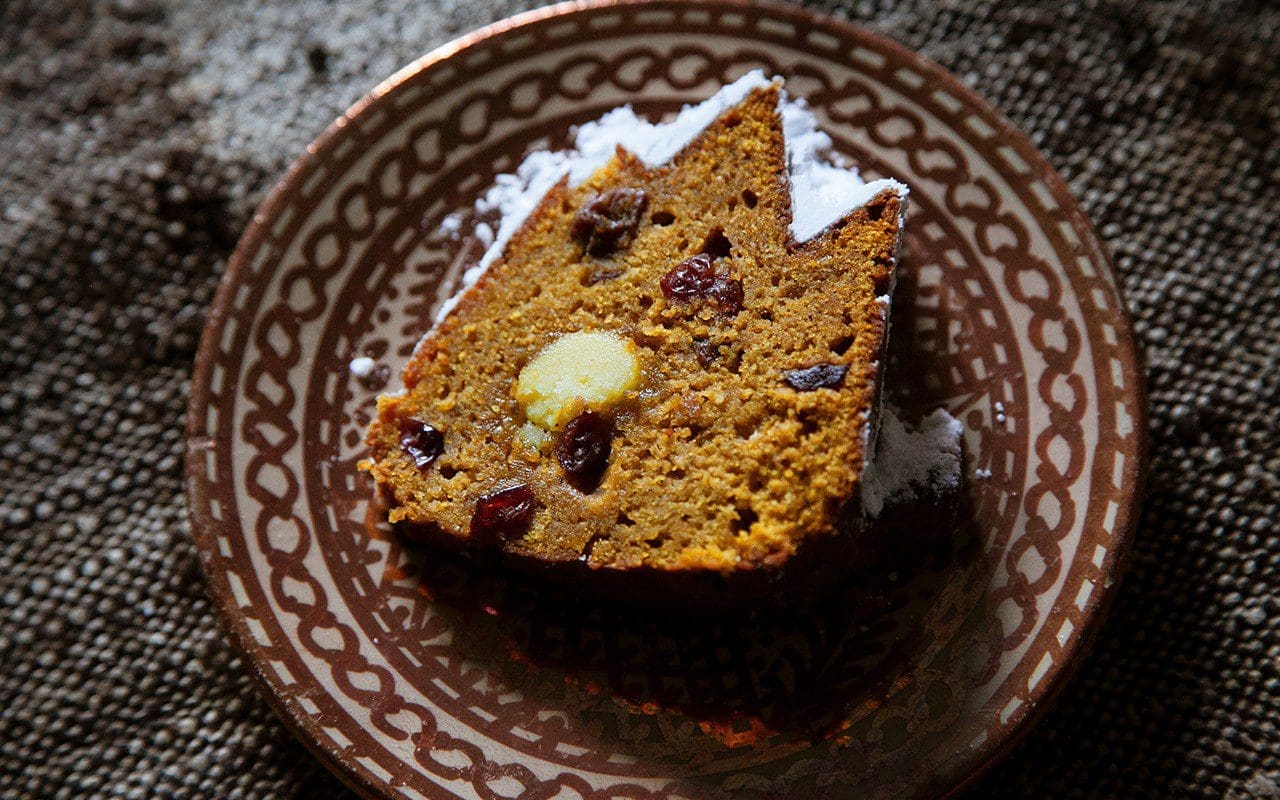
Recipe & photographs: Huw Morgan
Published 15 December 2018
Our hillside position comes with the weather and, perched as we are above the shelter of the woods below us, the wind is free to whistle. Our usual breeze, which brings most of the rain from the south-west, comes down the valley, whilst the chill winds that so often hit when the garden is coming to life, pushup the valley from the east. Unseen until you give it something to move through, the wind is something I set out to harness in the planting. The slopes behind us are allowed to run to meadow in the summer and the landform that we made to hold the buildings and the kitchen garden is also seeded to meadow. Look up the valley from the house and you can often see a breeze before it arrives, rippling towards us and making the wind visible.
The inclusion of ornamental grasses brings the meadows and their movement into the garden and it was important when trialling the grasses that they felt in tune and part of this setting. The deschampsia, molinia and panicum all had the modesty and grace I was looking for, but it was hard to have a grasses trial without including miscanthus. Silvergrass, clumping by nature and forming a distinctive mound of foliage before showy autumnal plumage, are not grasses that you use as a backdrop or a gauzy support. They are the stars when they are out and demand your attention.
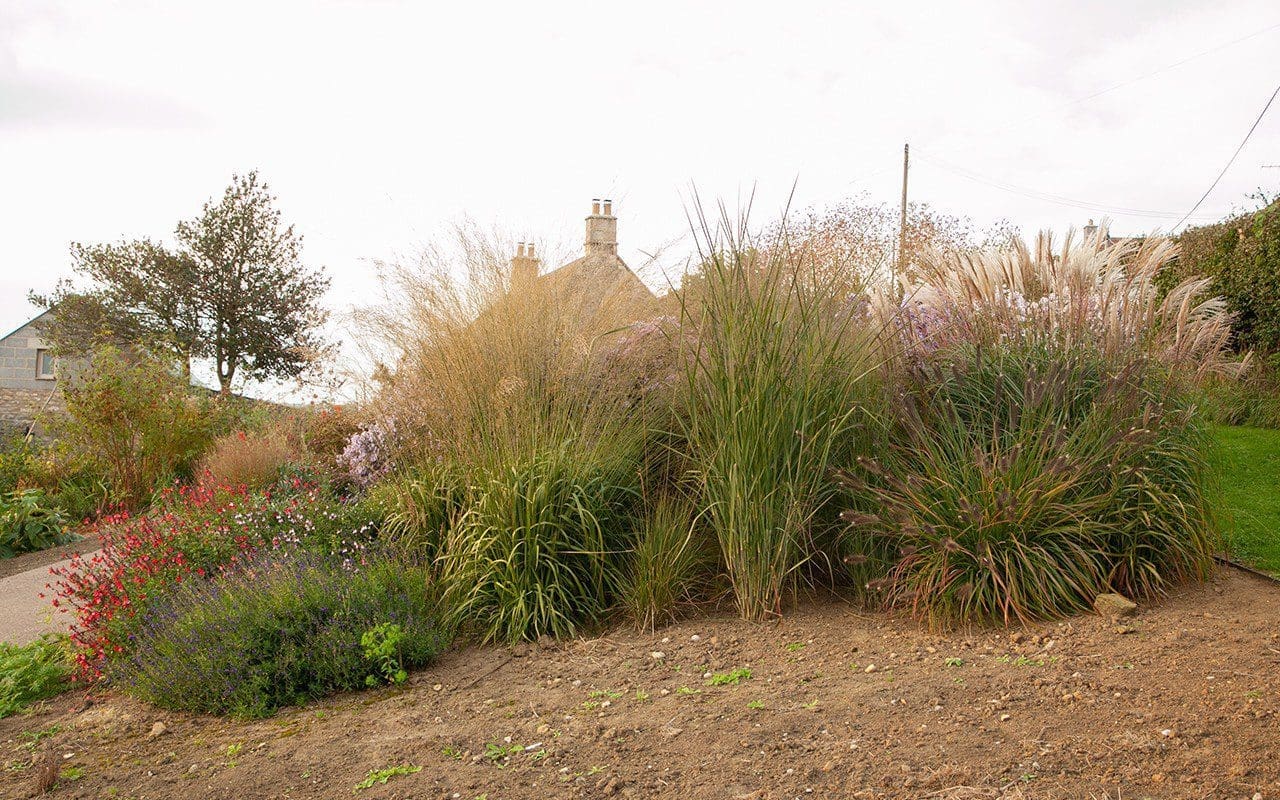 The grass trial in 2016 with the miscanthus to the right
The grass trial in 2016 with the miscanthus to the right
When I first started gardening miscanthus were perhaps more fashionable and the domain of designers such as John Brookes and Oehme and Van Sweden. My first encounter as a teenager was with Miscanthus sinensis ‘Silberfeder’ and at home I teamed it with Rudbeckia laciniata ‘Herbstsonne’. Together they soared to two and a half metres to fill our kitchen windows with artificial sunlight. The golden flowered black-eyed-Susan and silver feathers of the miscanthus provided for a full three months of autumn. I have played with miscanthus fairly consistently since then, slowly working my way through a plethora of species and cultivars. In the early years Miscanthus sacchariflorus was a favourite for its three metre stands of rustling sugar-cane foliage and then M. sinensis ‘Zebrinus’ for its distinctive horizontal stripes of bright lime green. These plants were selected for their structural presence, but we are spoiled today with a wealth of forms selected for their silky flower.
When I had enough space of my own in our old Peckham garden I toyed with several different varieties over the fourteen years we were there. Getting to know a plant for three or four years and then moving on to try a new variety kept the garden moving and my knowledge and appetite replenished. Miscanthus nepalensis was perhaps the most exotic, a relatively tender species with pendant, burnished plumage like a golden fleece. Though beautiful it proved to be less reliable than others. This was possibly due to the fact that I tried to insert them when the planting was well-established, casting too much shade and competition. One of the great positives about miscanthus are that they are reliably clump forming and long-lived too, if you give them the room and the light they need to perform.
The best of those that I have experienced for myself combine a good balance of foliage and an ability to stand well once they come into flower. The lofty ‘Silberfeder’, for instance, leans as the flowers develop. Varieties such as ‘Yakushima Dwarf’ and ‘Kleine Silberspinne’ have been specifically selected not to take space, their fountain of foliage being neat and their flowers losing none of their grace for being upright and self-supporting. A good plant is one that you can leave more-or-less alone from the point it is taken back to base in February. It will pull away with a fresh mound of strappy leaf and then need no corralling as it comes into flower.
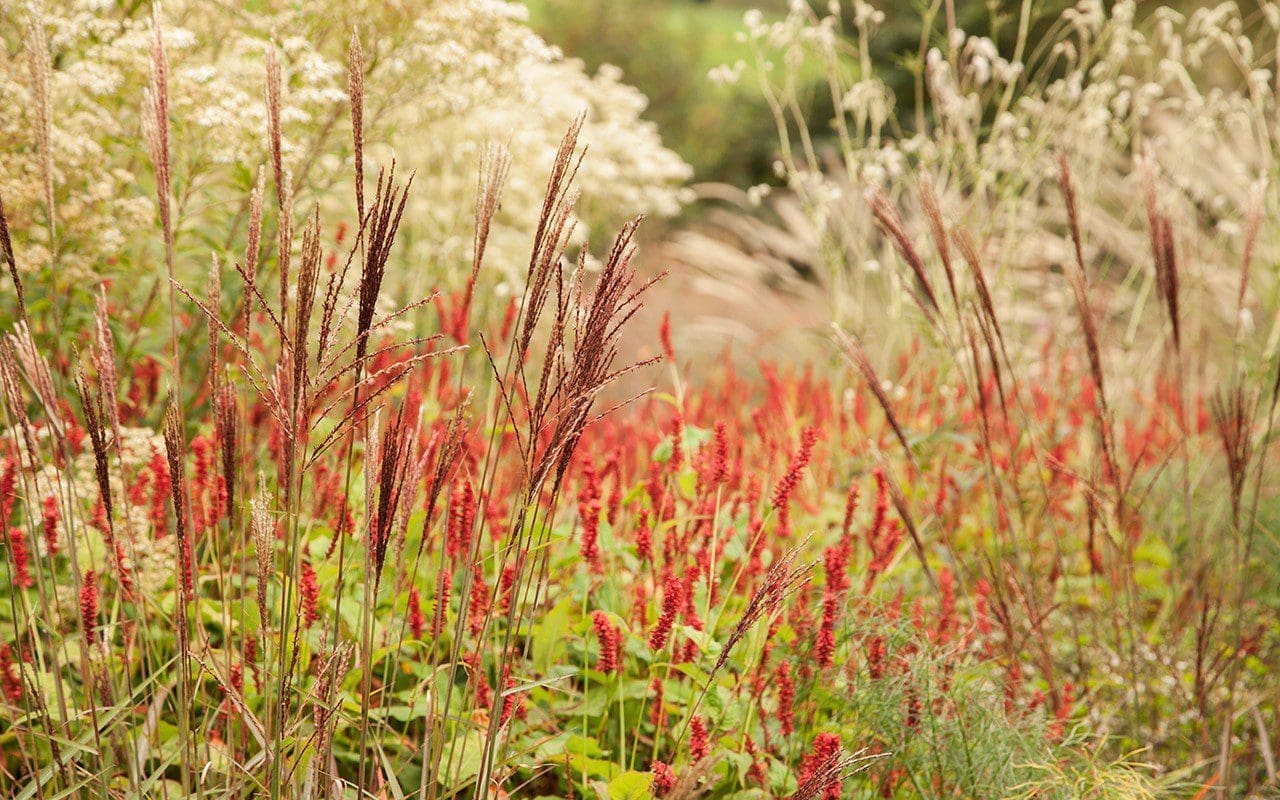 Miscanthus sinensis ‘Dronning Ingrid’ with Persicaria amplexicaulis ‘Blackfield’, Aster umbellatus and Sanguisorba ‘Stand-up Comedian’ in September
Miscanthus sinensis ‘Dronning Ingrid’ with Persicaria amplexicaulis ‘Blackfield’, Aster umbellatus and Sanguisorba ‘Stand-up Comedian’ in September
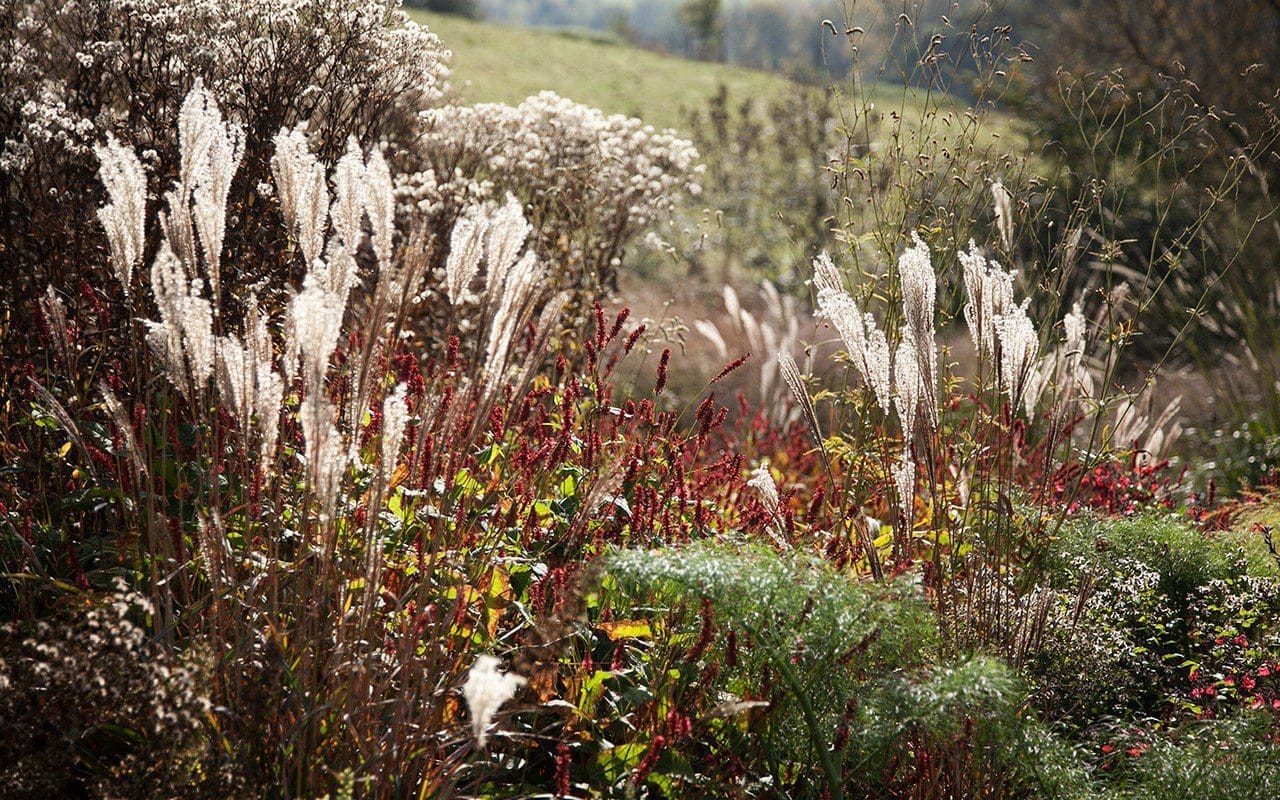 The same combination in late October
The same combination in late October
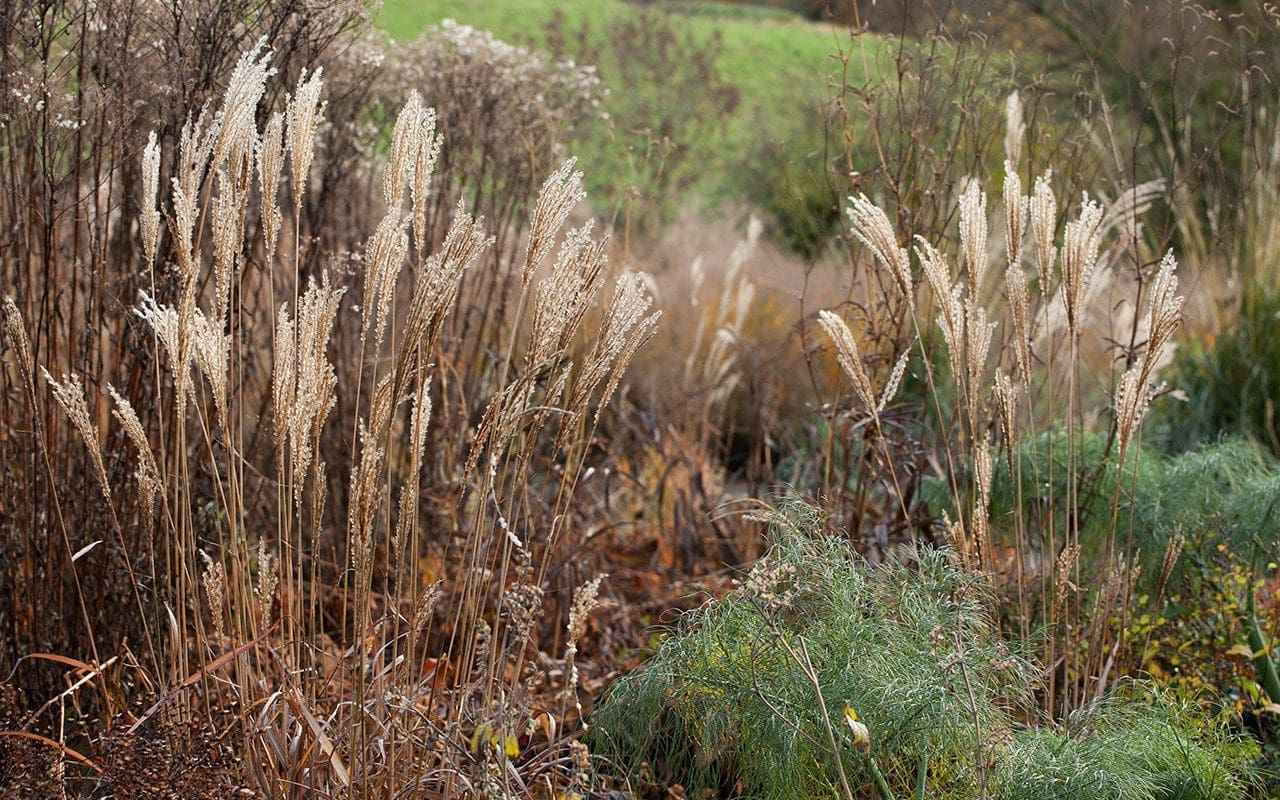 And again in late November
And again in late November
Whether they are tall or short, miscanthus always have a presence and it is no surprise that in Japan, where you will see their silvery plumage animating roadsides, they are celebrated as the harbinger of autumn. This is their real season and, though I always enjoy the reliable companionship of their foliage in summer, the moment their flowering stalks begin to rise, you know that the next season is in the air.
The flower colour of the named forms varies enormously, the silver plumage of the wild M. sinensis being the colour you see most often. Those selected for the pink in the flower, such as ‘Flamingo’, are undeniably beautiful, but they set a very particular tone, which is rather unnatural. My favourites are the darkest with thunderous reds and browns in the emerging flower. ‘Ferne Osten’ is one of the first to appear in August with dark red flowers, but this earliness brings the autumn feeling into the garden too soon, as the flowers ripen and pale in September. I am happy to see the flower spikes breaking free of the mounding foliage in August, but over the years I have come to prefer pushing autumn the other way and to only now be feeling that we have seen the last of it and that winter is upon us.
Of the five or six miscanthus I trialled for the garden here, I had to be strict. In fact I almost discounted them altogether as being too showy for this rural location. The ornamental mood of the Silvergrass requires them to be close to the buildings or where the garden can afford to feel less connected to the meadows beyond us. I kept two, the first to come to flower being ‘Dronning Ingrid’. This is a delightful plant (main image), good for being modestly sized both in the scale of the leaf and the mound it creates as it gathers in strength during the summer. The flowers started to push up in August here, showing their dark, wiry filaments by the end of the month, their upright form retaining space between the plumage. I like this very much because the flowers act as weather vanes, describing the wind in each of their outlines. The deep mahogany in the flower is set against pale Aster umbellatus and the redness picked up in an undercurrent of Persicaria amplexicaulis ‘Blackfield’. They retain a sleek darkness for the best part of six weeks, before the foliage reddens and the flower ripens and pales as it becomes more feathery.
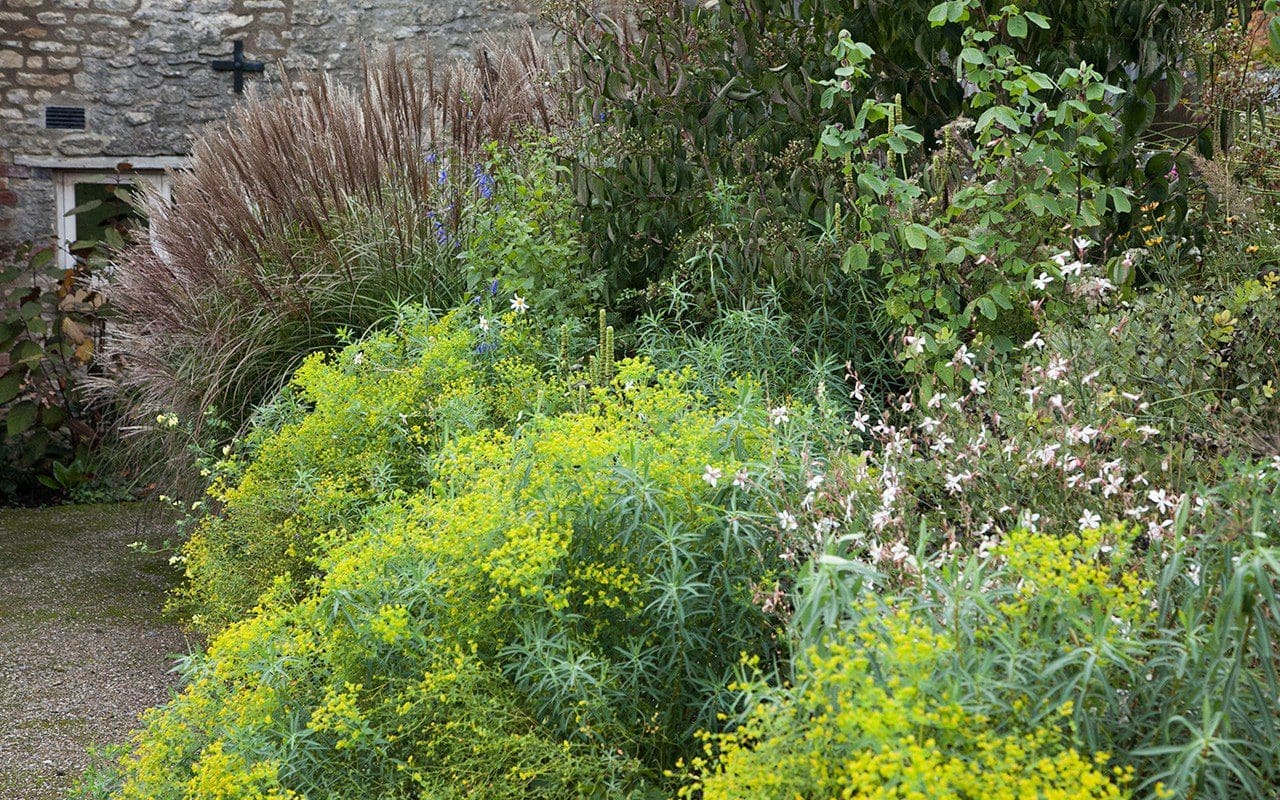 Miscanthus ‘Krater’ holds the bottom of the steps that lead down to the studio
Miscanthus ‘Krater’ holds the bottom of the steps that lead down to the studio
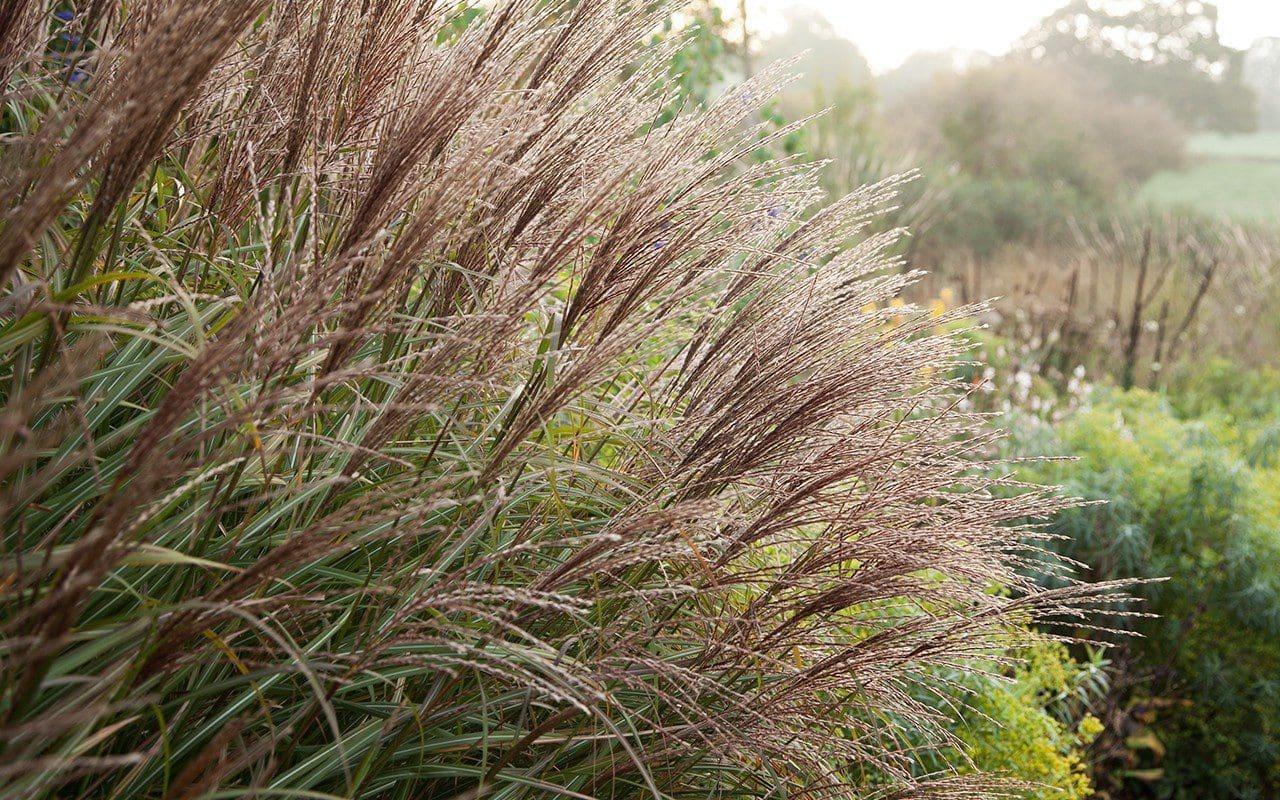 Miscanthus s. ‘Krater’ in early October
Miscanthus s. ‘Krater’ in early October
 Miscanthus s. ‘Krater’ with the dark seedheads of Astilbe rivularis in November
Miscanthus s. ‘Krater’ with the dark seedheads of Astilbe rivularis in November
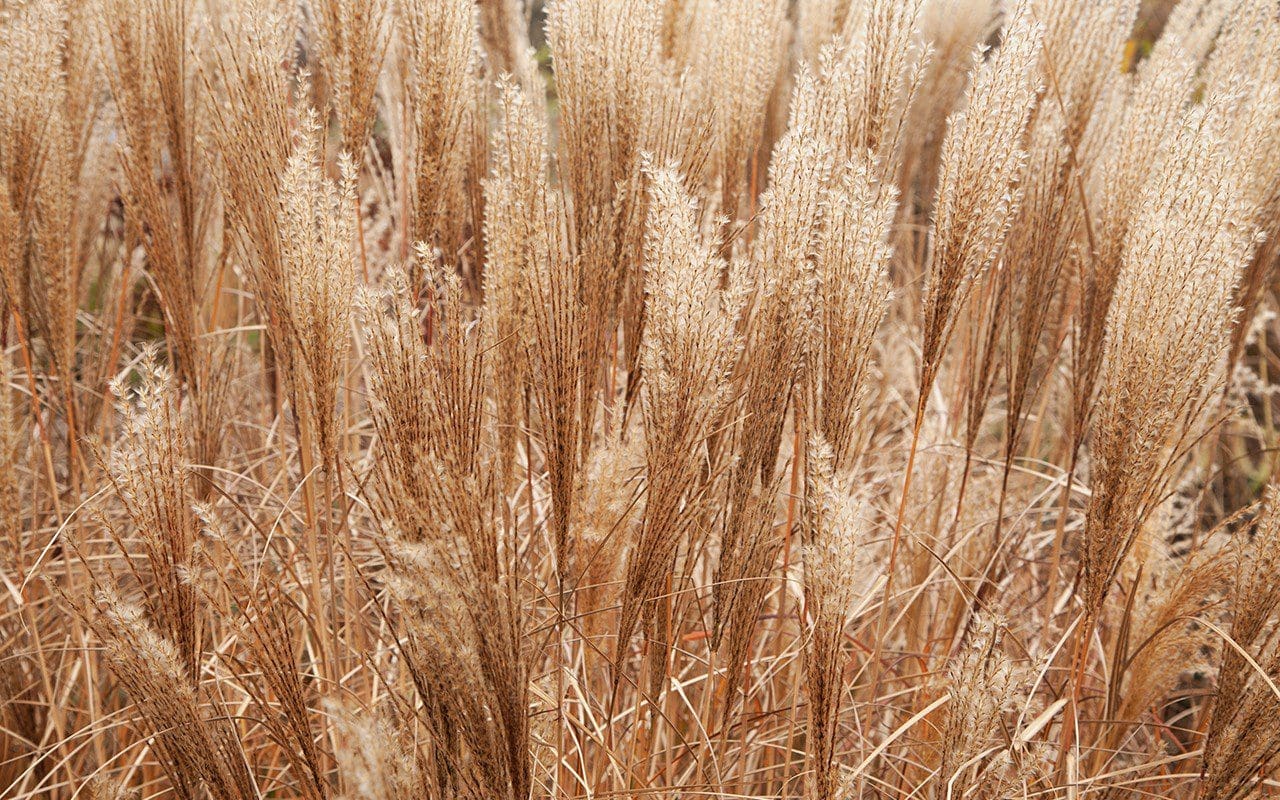 Miscanthus s. ‘Krater’ in early December
Miscanthus s. ‘Krater’ in early December
‘Krater’ is the bigger of the two, but still compact and orderly. It is planted here to hold the corner at the bottom of the steps down to the studio where the foliage mounds to waist height before pushing up flowers in September. The original clump was quartered two years ago (in March, the time to split grasses) and I do not expect to have to divide them again for seven or eight years. They take the full brunt of sunshine in this position and provide shadow for hellebores I’ve planted on their north side. This ability to use miscanthus like shrubs for structure and shade is one of their greatest assets. ‘Krater’ also starts dark and moody in flower, but the flowerheads are both a more subdued grey-brown and more open and tasselled than ‘Dronning Ingrid’. As the season progresses the foliage flares yellow and orange before bleaching to parchment for the winter. As the flowers age and the dark cloud silvers, they provide us with light catchers to arrest the low rays as they glance through the garden.
By the end of February, when we start to clear the perennials, I will have had enough and will take a serrated Turkish knife and fell them to the ground. This will mark the end of the period we are now just entering, a winter endured and mapped in a grass that I will always take time to make room for.
Words: Dan Pearson / Photographs: Huw Morgan Published 8 December 2018
We are sorry but the page you are looking for does not exist. You could return to the homepage